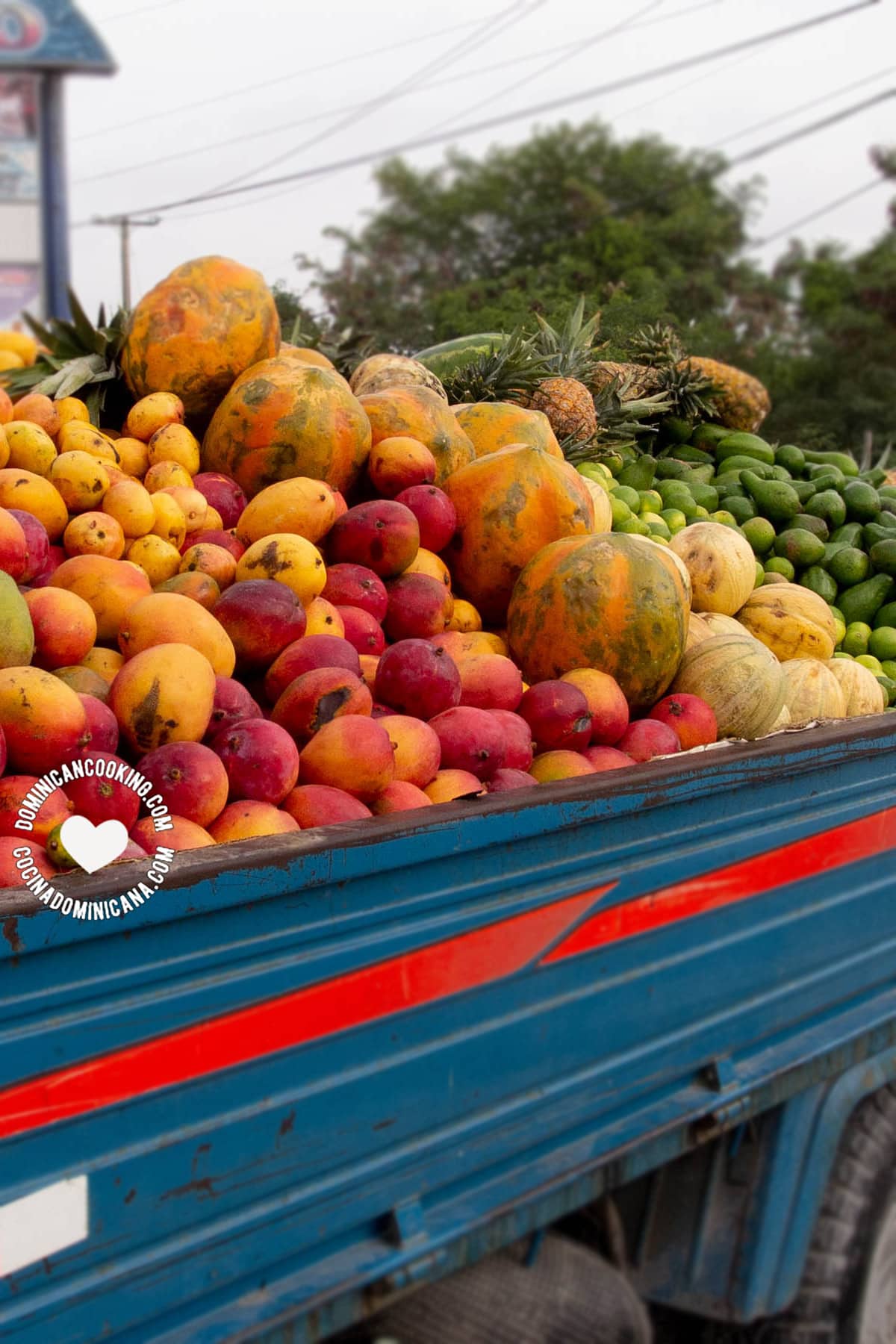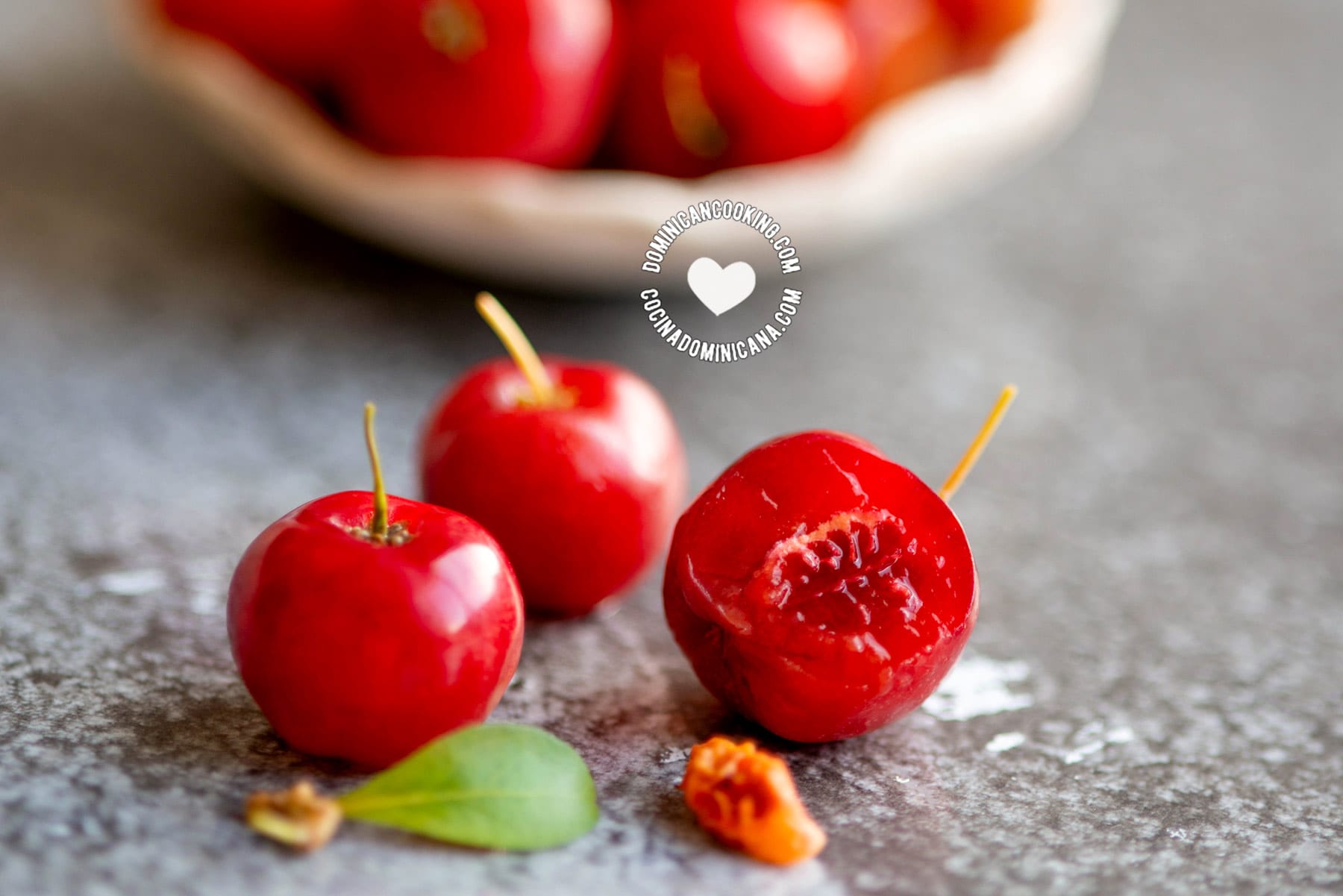Everywhere you go in the Dominican Republic tropical fruit trees dot the landscape; by the roadside, on city streets and in every garden. Colorful stalls on street corners and along the country’s roadsides sell a variety of Dominican fruits, and vendors known as fruteros display their wares in attractive formations on carts, the backs of trucks, or tricycles.
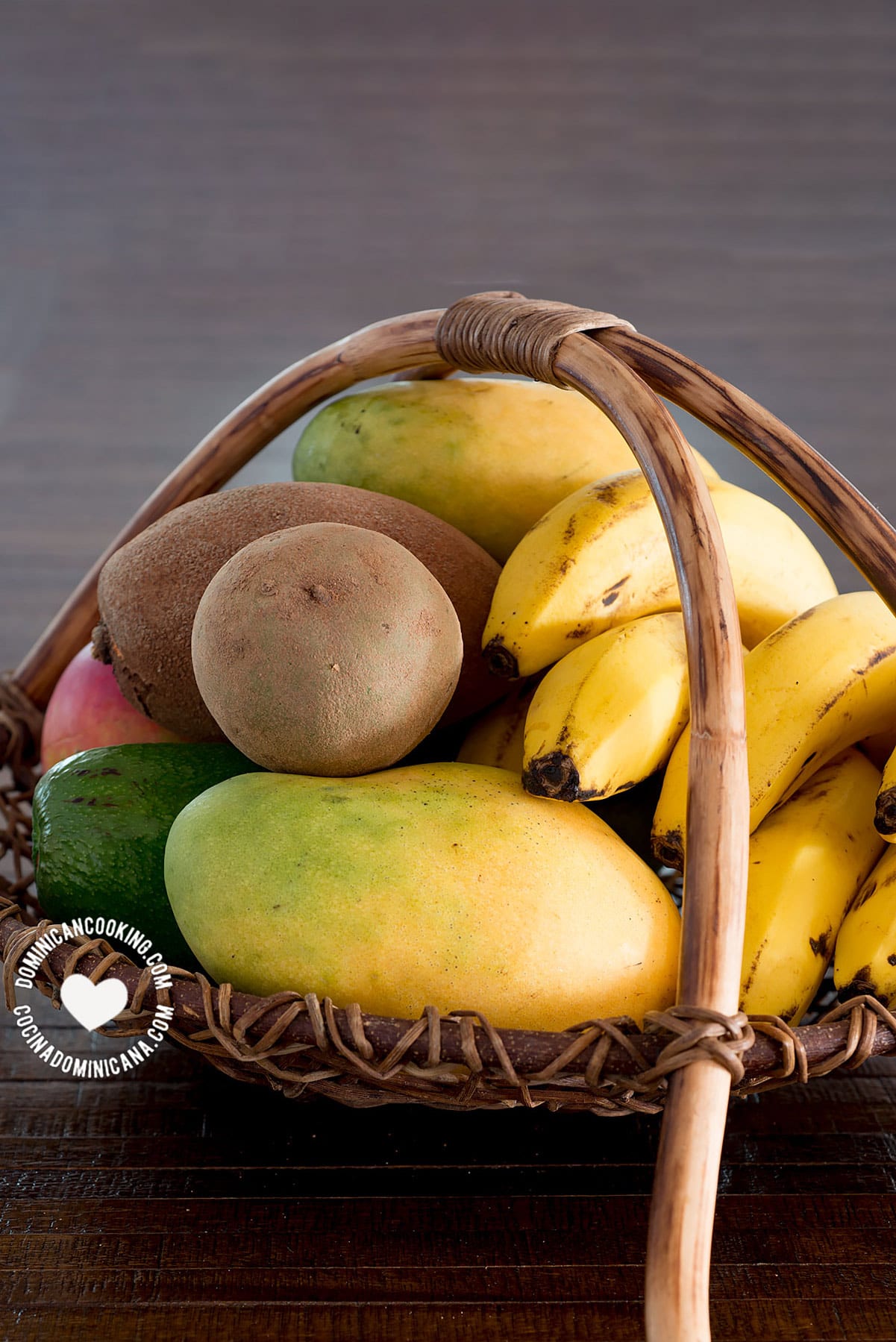
Does the Dominican Republic have a national fruit? Not in the same way as there is an official national tree (mahogany/caoba), bird (palm chat/cigua palmera), and flower (Bayahibe rose/rosa de Bayahibe).
Unofficially, though, mango would be a strong contender for this status for its deliciousness, popularity, and ubiquity in local markets, supermarkets, and corner fruit stands. We can enjoy dozens of different varieties of mango, like grano de oro and banilejo.
But there are many more fruits that grow in the Dominican Republic, some well-known, some relatively obscure. Let's explore them.
How we eat them
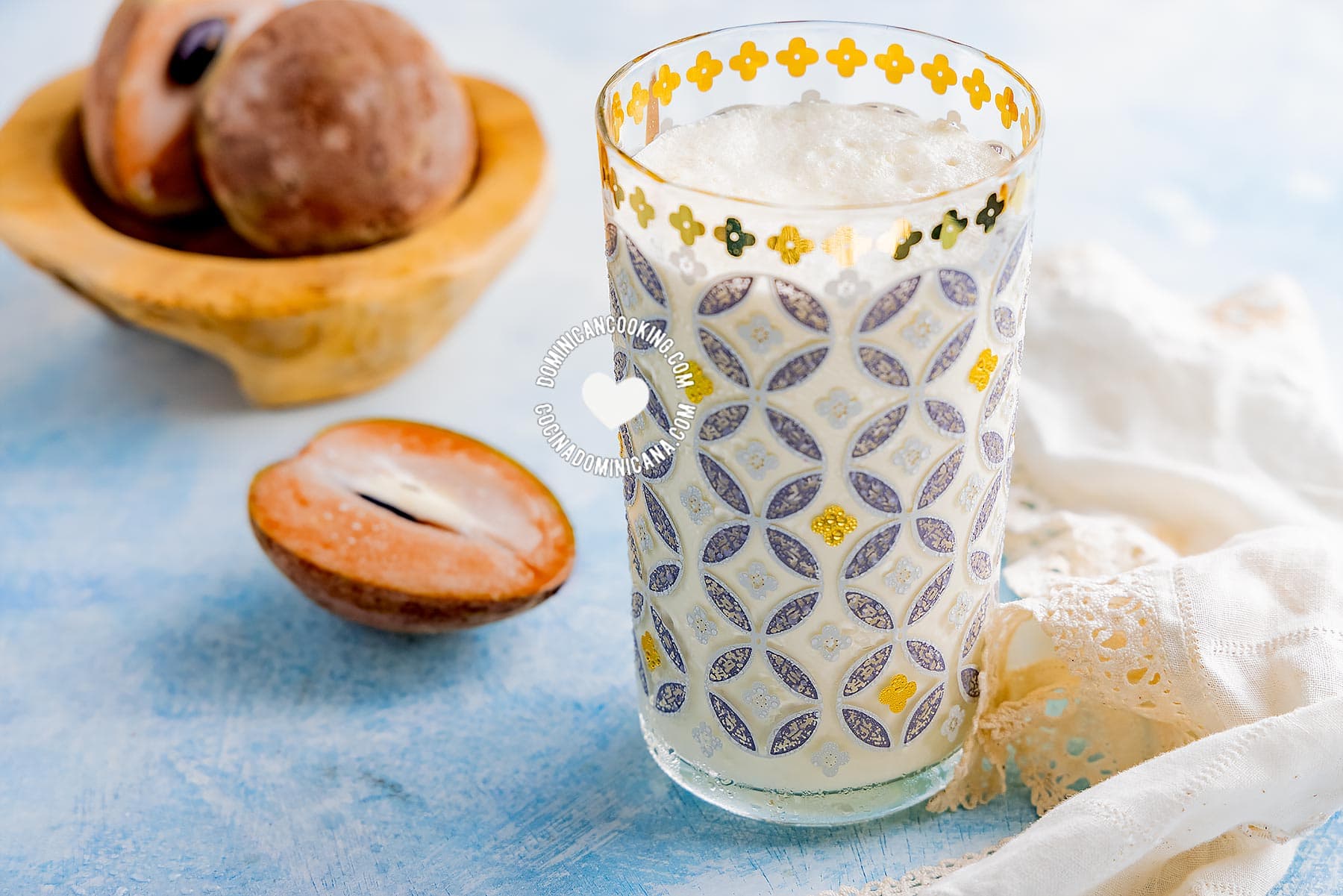
In the Dominican Republic, fruit is eaten fresh, and fruit juices (jugos naturales), fruit punch (ponche de frutas), and smoothies (batidos or batidas) or milkshakes are very common.
Candied fruit in syrup – dulce de fruta en almíbar – is a simple but popular dessert, and some are also made into jam or marmalade.
Aguacate
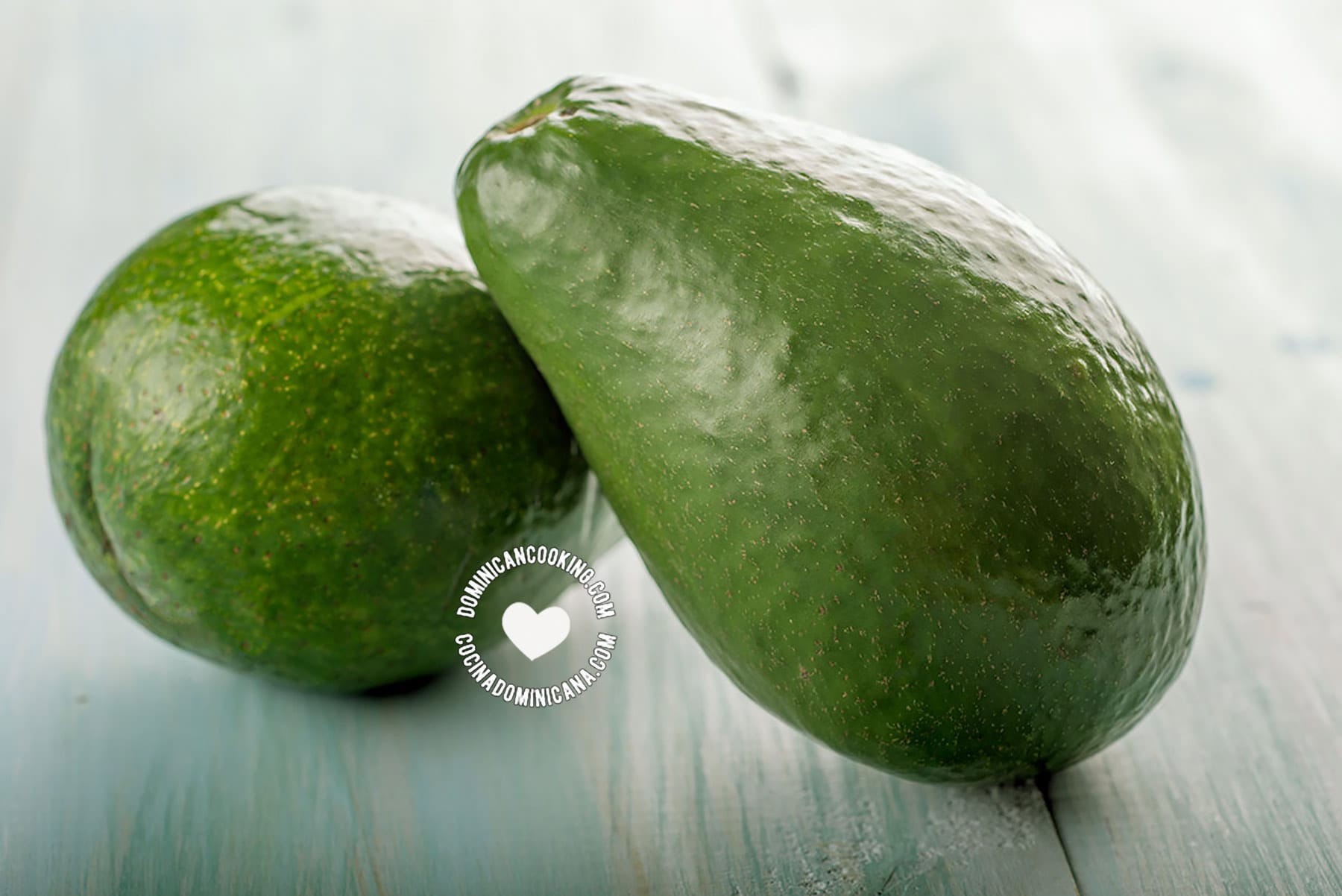
Persea americana is called avocado in English, sometimes also avo, avocado pear, and alligator pear. In most parts of the Spanish-speaking world, including the Dominican Republic, the name is aguacate, except for the Andean region, where it is called palta. Both words are derived from indigenous languages, Nahuatl and Quechua, respectively. Although botanically a fruit, it is eaten as a vegetable and is hugely popular in our country as an accompaniment to main dishes or mashed on bread as a snack.
I don't believe we have to describe the taste of avocado, don't you think?
Almendra

Terminalia catappa is the scientific name for a tree that Dominicans call "almendra", not to be confused with almonds, which in standard Spanish are known as almendras/almendros. Dominican almendras are known in English as Indian almonds, sea almond, or tropical almonds. In other Spanish-speaking countries they are called "Almendro de playa, Almendro malabar, Zapoteco, Almendro de los trópicos, Almendrón y Falso kamani [source]".
Almendras have a sweet flesh with thin skin, and a pit inside that when dried and cracked yields an almond-like elongated nut. Both the fruit and the little nut are edible.
Anón
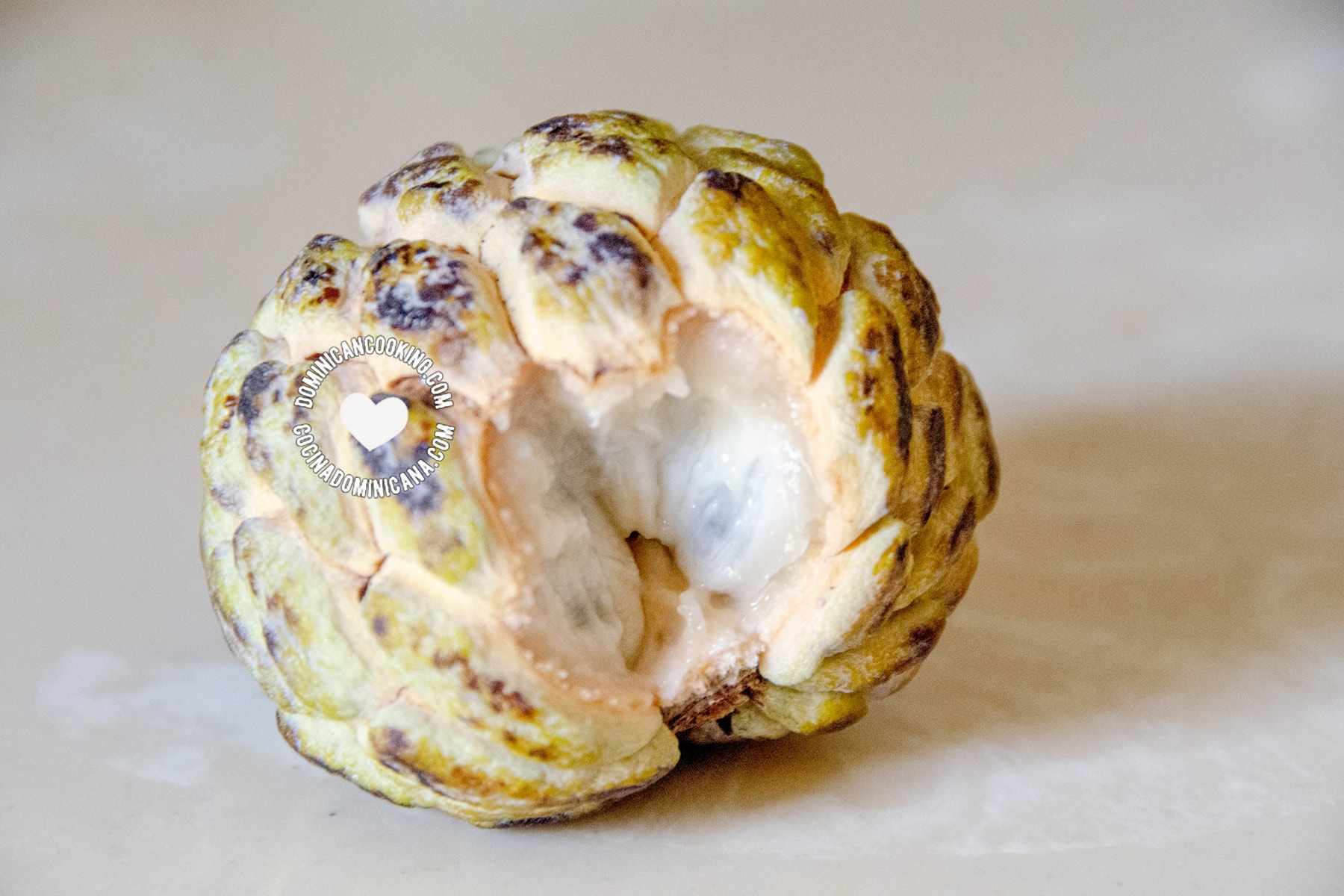
Annona squamosa is called sugar apple or sweetsop in English (also known as mamón as well as anón in the Dominican Republic). Anon has a very sweet, white, edible pulp and many black seeds and is a good source of iron and vitamin C. It can be made into a juice the same way as jugo de guanábana.
Arrayán
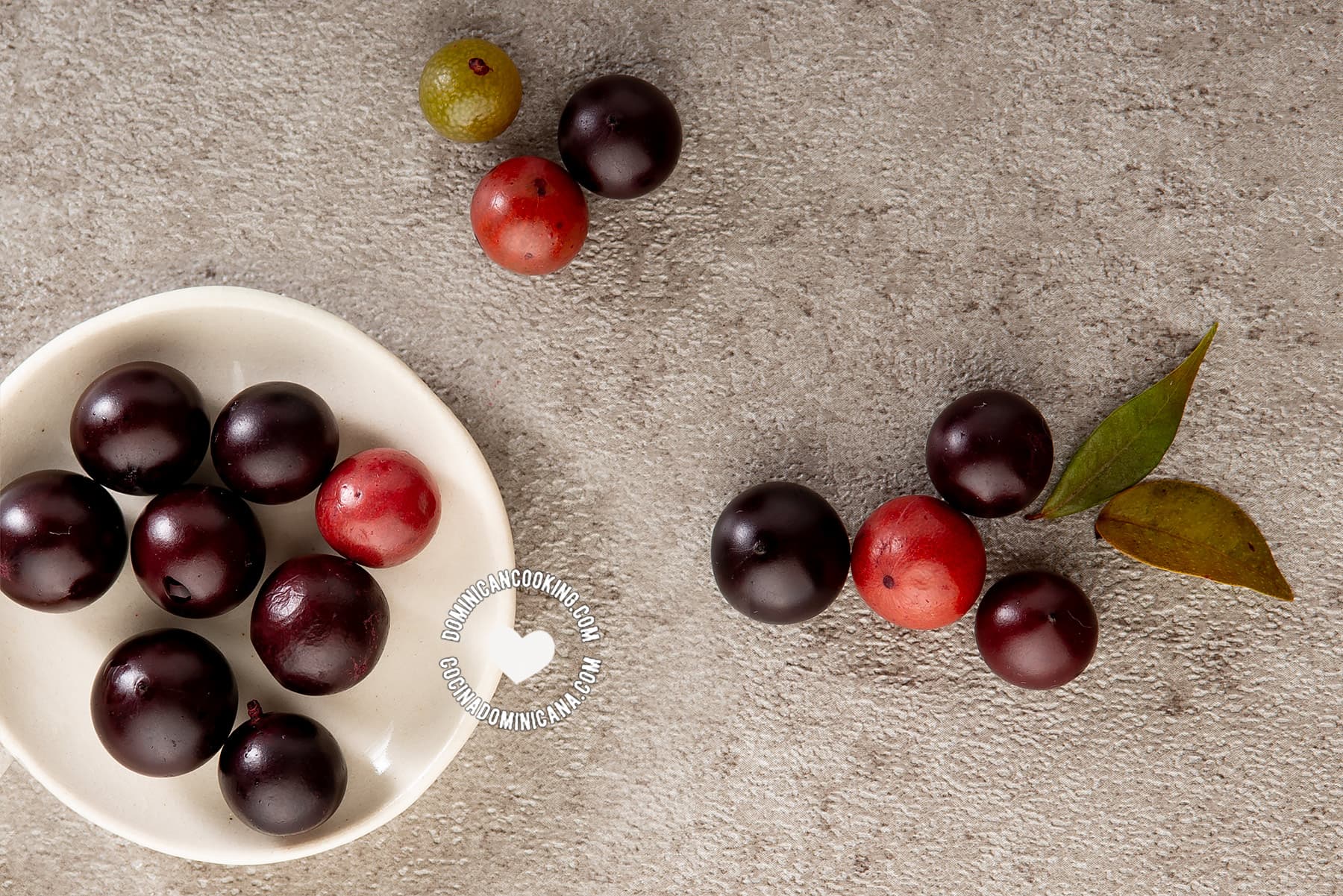
Myrciaria floribunda or arrayán – better known as guavaberry – is an uncommon fruit most famous for being the fruit with which the eponymous Guavaberry drink is made. Arrayán resembles cranberries in diameter, shape, and texture. It is only mildly sweet, and aside from a drink, it is also made "en almibar", a jam-like dessert with spices and light syrup.
Even though San Pedro is the city made famous by Juan Luís Guerra and 440 for guavaberry, most guavaberry grows in El Seybo, and harvested around November. The Guavaberry drink will be available in December, and for Petromacorisanos it is a Christmas tradition.
Buen pan or Pan de fruta
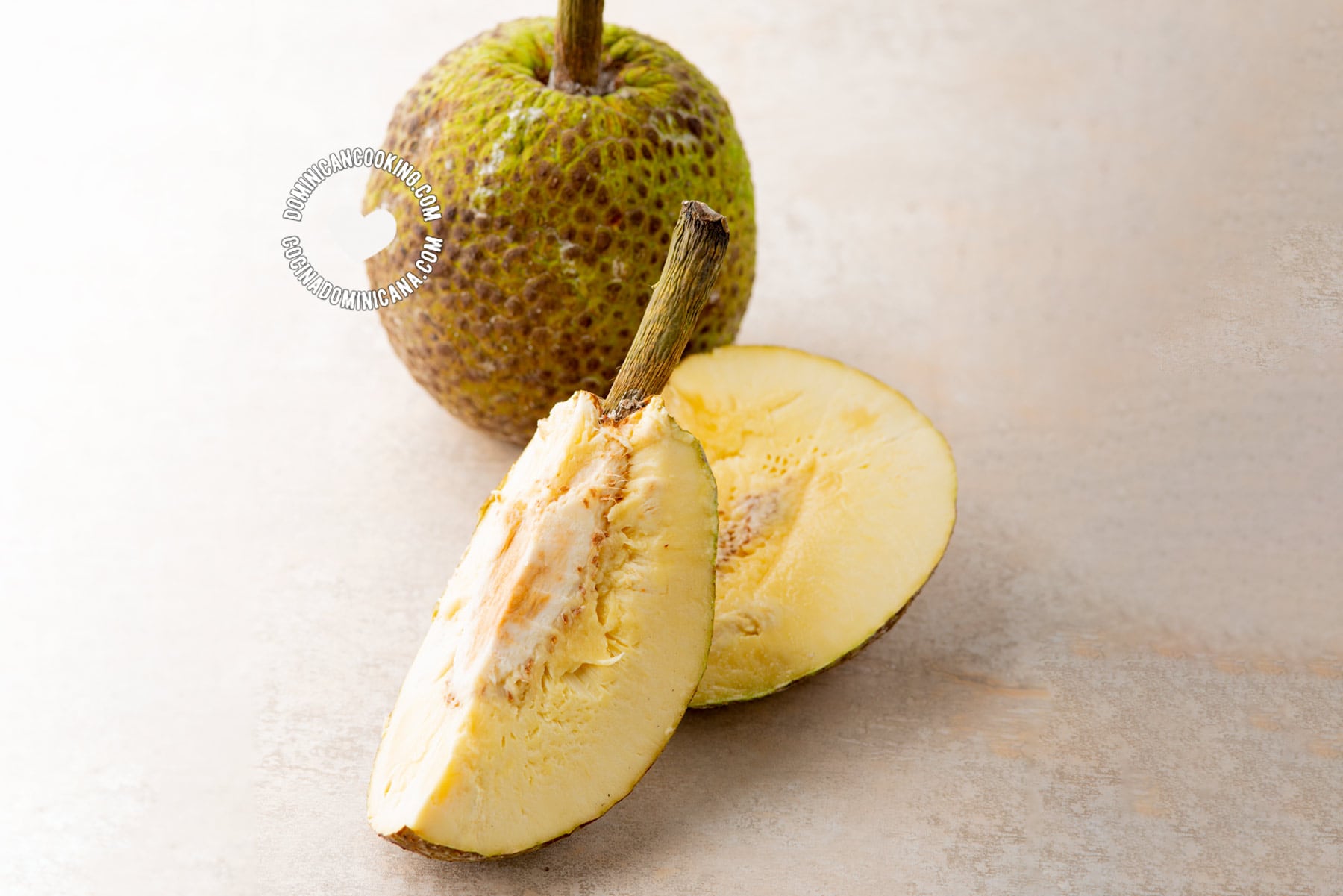
Artocarpus altilis is the breadfruit in English. Other Spanish names include pana fruit, fruta del pan, masapán, vijahoó or panapén, and frutipan. As its name suggests, its taste and texture are like bread and they are usually cooked and eaten as savory food. A popular way to cook it is fried, in a fritter that resembles tostones.
It contains fiber, protein, magnesium, potassium, phosphorus, thiamine (B1), and niacin (B3).
Cacao
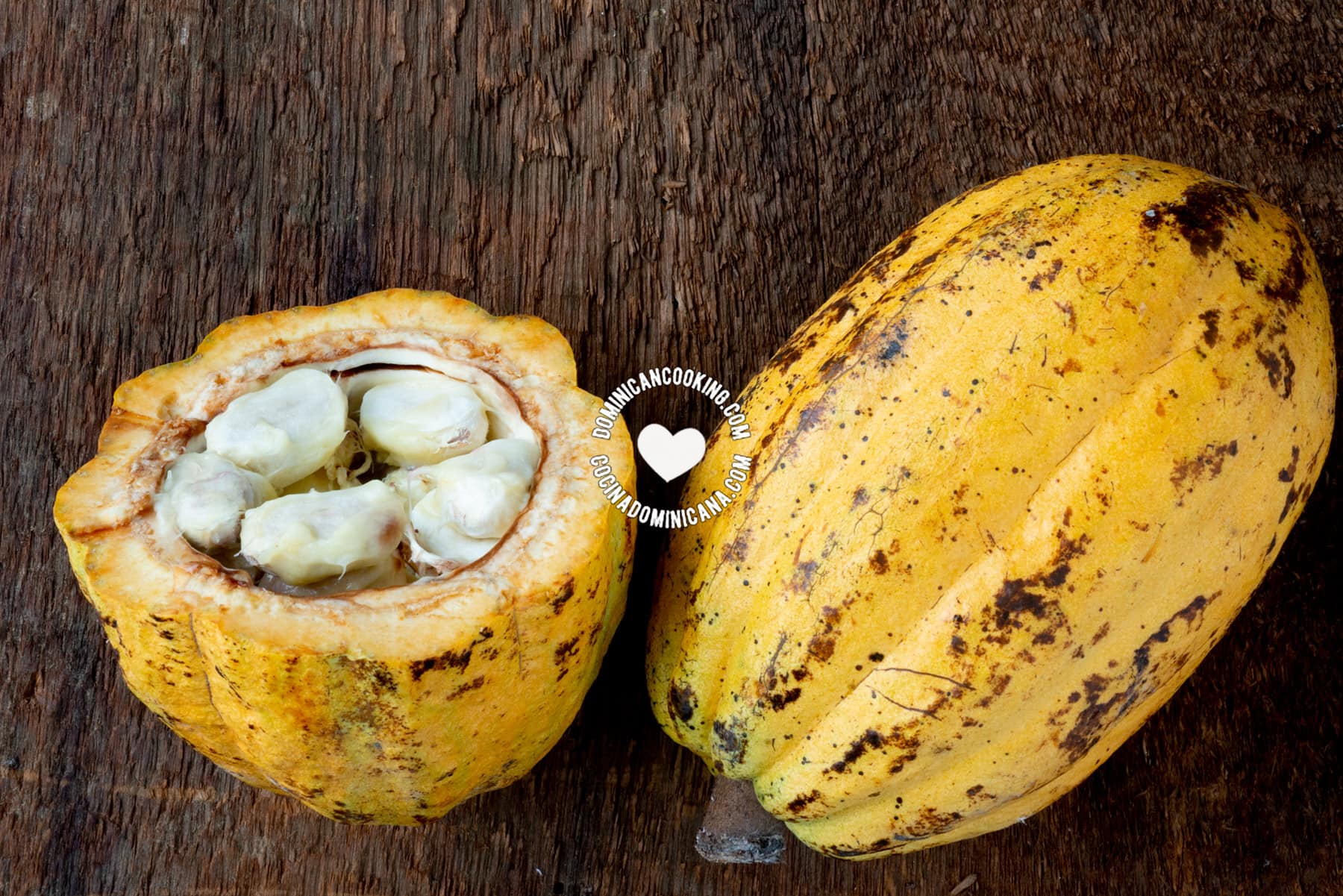
Theobroma cacao is the scientific name for the cacao or cocoa bean/pod, and we count it as a fruit because it grows on trees and is edible in its unprocessed form, with a sweet and tart fruity flavor.
It is also locally made into chocolate and cocoa powder and used as the base for our chocolate de agua (non-dairy cocoa) and chocolate con leche (dairy cocoa).
Cajuil

Anacardium occidentale: Cashew apple (the edible seed is called cashew nut, despite not technically being a nut) is the fruit of a tree native to Brazil. The name cajuil in Spanish is derived from the Brazilian name caju. Other Spanish names are marañon and anacardo. It grows in the Dominican Republic and there’s a cottage industry of roasted cashew nuts and cashew apple jam (dulce de cajuil) sold on roadside stands all over the country.
The cashew apple has a thin skin and a mushy sweet flesh.
Carambola
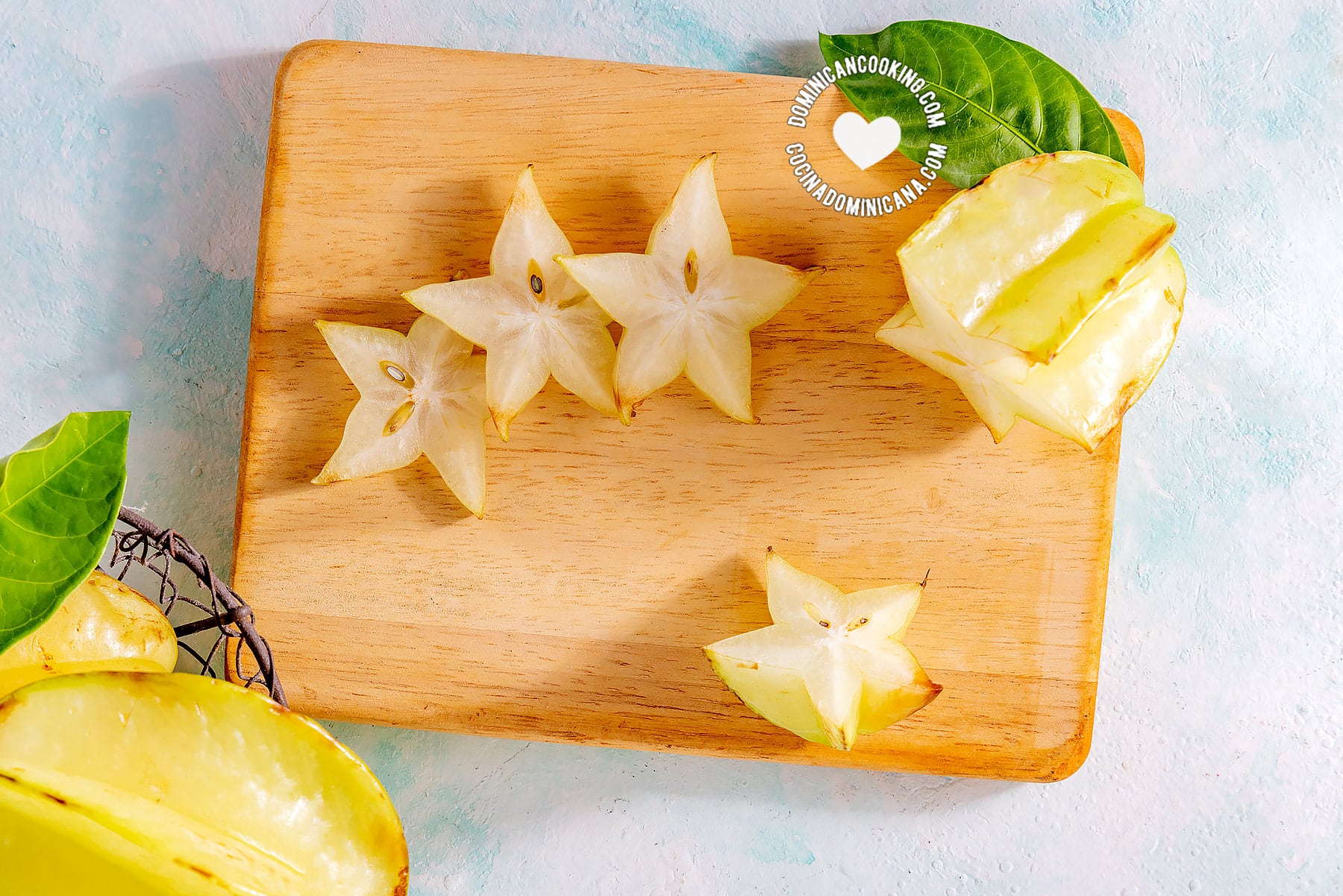
Averrhoa carambola is known as star fruit or five fingers in English. When sliced, the fruit resembles a star, hence the name. It is usually eaten raw, made into desserts, and in juice, added to salads, and is sometimes used as a garnish.
The taste of carambola is slightly similar to pears but with a different texture.
China
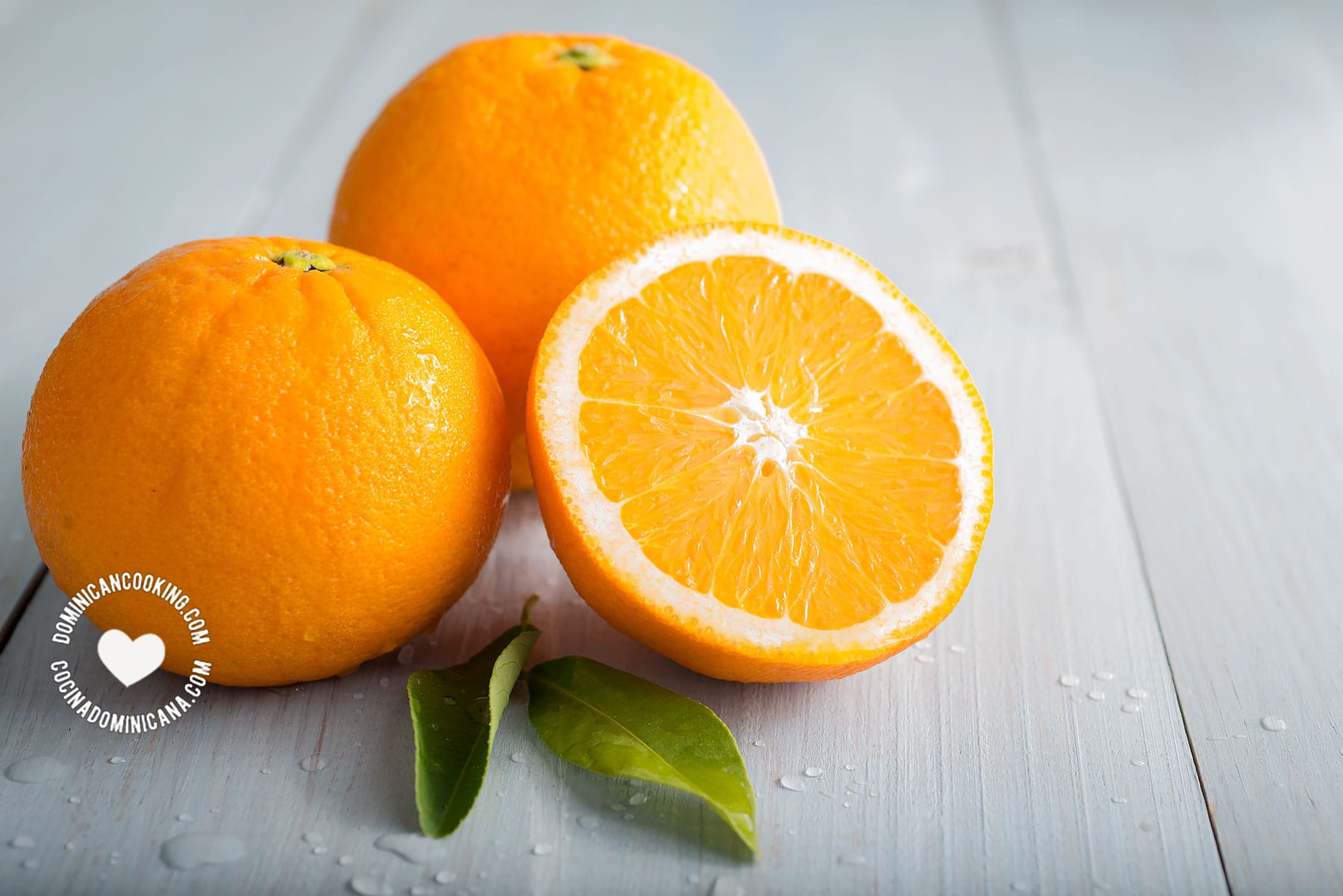
China, or naranja dulce is what Dominicans call Citrus × sinensis, the ubiquitous orange. Why we call orange "china" is a linguistic curiosity we have already explored. Oranges are always present at fruit stands, and some (chineros) specialize in selling peeled oranges only. Aside from eating it in wedges, we make it into juice (jugo de china), and our beloved Morir soñando (the unofficial national Dominican drink).
Chinola
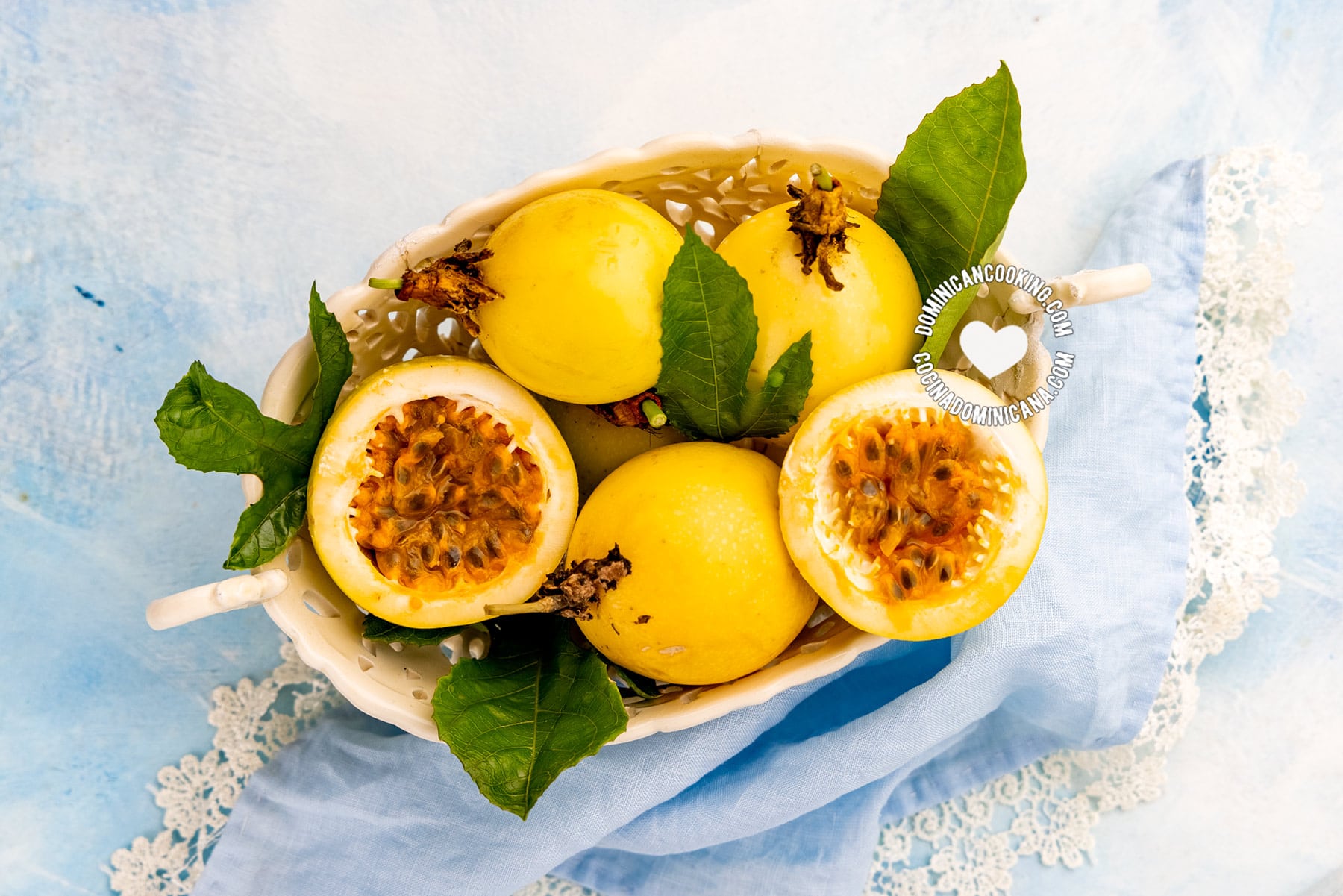
Passiflora edulis is called passion fruit and – less commonly – fruit of passion in English. In the Dominican Republic it is known as chinola but other parts of the Spanish speaking world call it parcha, parchita, maracuyá, calala, and fruta de la pasión. It is a favorite in fruit juices.
We enjoy its citrusy flavor in refreshing passion fruit juice.
Coco
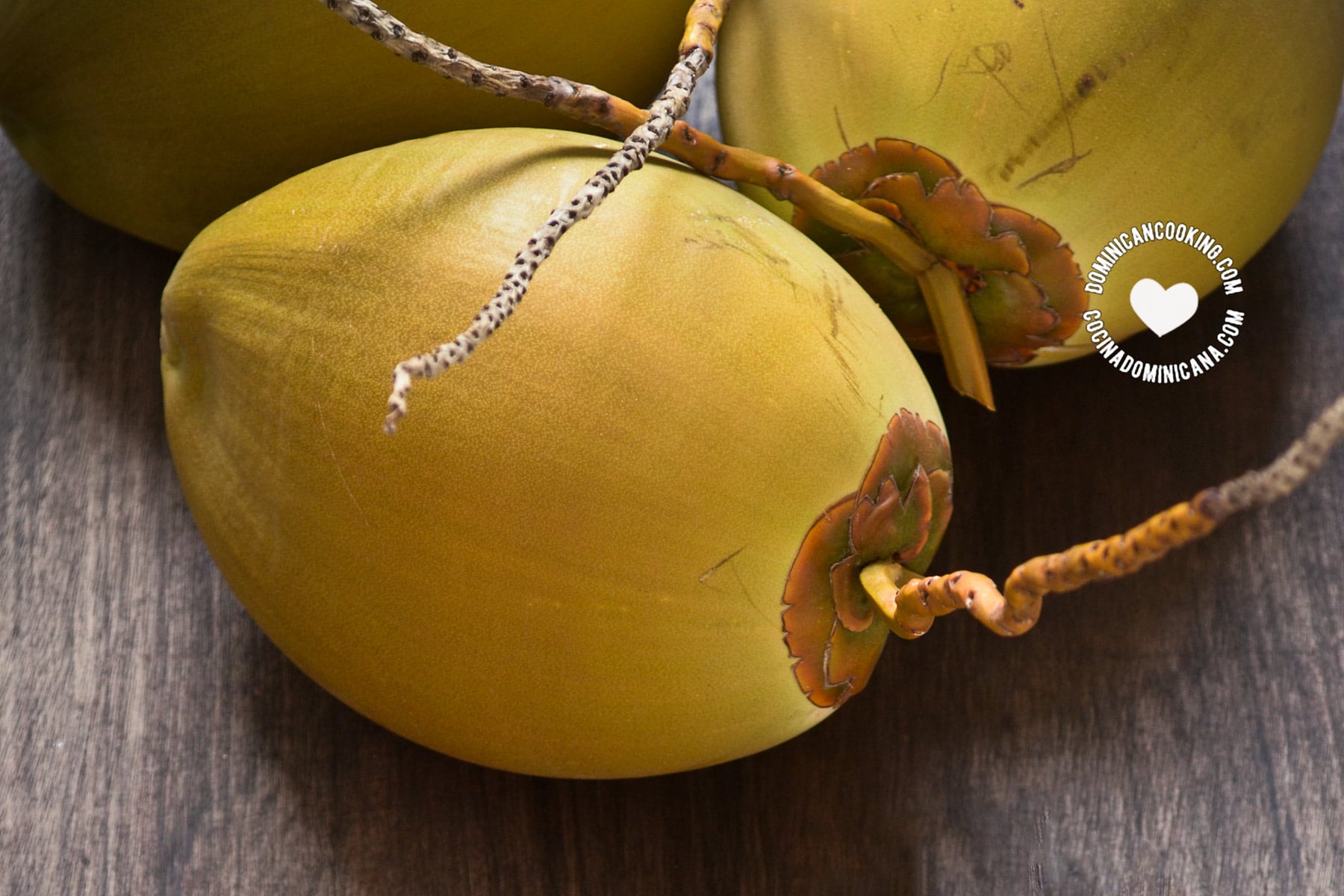
Cocos nucifera is the scientific name for coconut. Its name is derived from an old Portuguese word for head or skull, which Spanish speakers will also be familiar with. Coconut palms are a prominent feature of the coastal landscape in the Dominican Republic and coconut also plays a starring role in the culinary repertoire, with coconut water as a popular refreshment, coconut oil, and coconut milk or flesh as an ingredient in savory seafood and rice dishes, as well as desserts and sweets.
Samana stands out for its abundance of coconut groves, and for the many ways it is used in their traditional dishes like moro de guandules con coco, guandules guisados con coco, pan de coco, and pescado con coco.
Granadillo
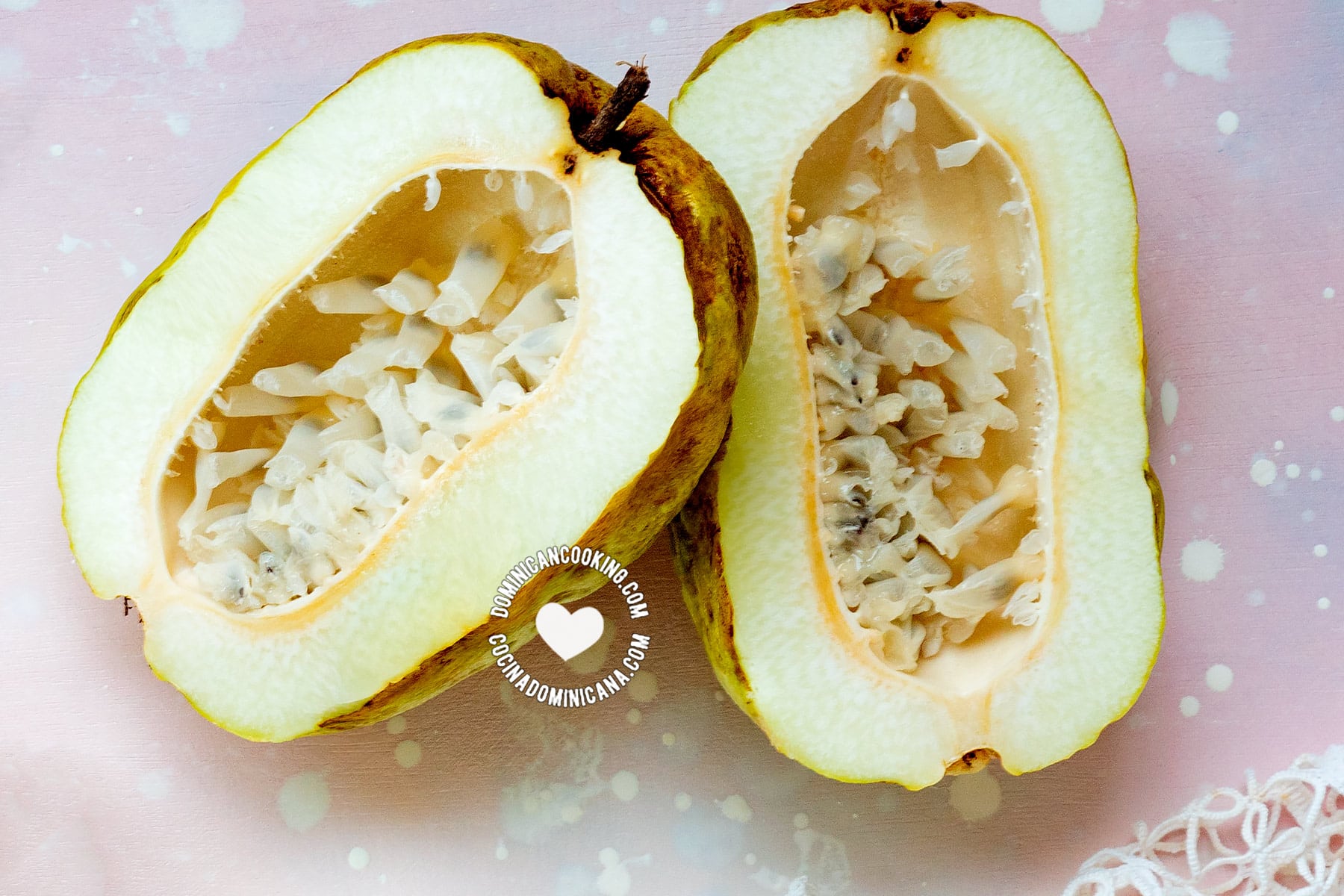
Passiflora quadrangularis (English name: giant granadilla, granadilla) is related to passion fruit and has a slightly sour (much gentler than passion fruit) flesh. It is large, with a pear-like texture, very aromatic, and mildly sweet. It is commonly used for shakes in the Dominican Republic. Granadillo is rich in antioxidants and packs a fair amount of phosphorus and a small amount of calcium.
Granadillo is typically consumed as the main ingredient in the popular batida de granadillo.
Guanábana
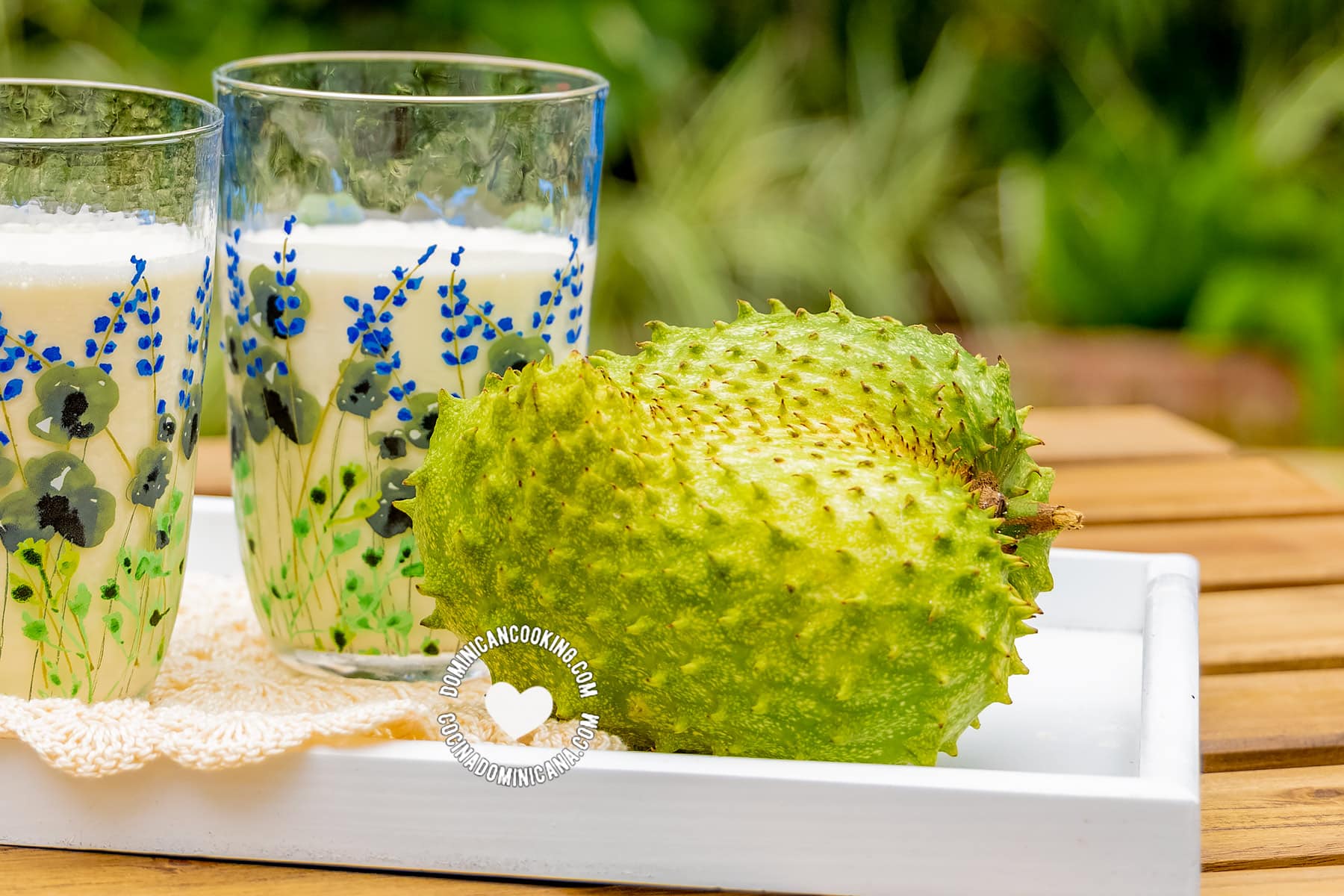
Annona muricata is called soursop in English (also called graviola, guyabano), a fruit with white flesh and a gently-sweet creamy taste. In the Dominican Republic, the most common way of consuming this green, spiky fruit is in champola, a refreshing drink made by blending the creamy flesh of the fruit. Guanábana is in season all year round, and the fruit and the leaves of the tree are said to have medicinal properties.
Note: both Guanábana and Anón are related to chirimoya or cherimoya fruit (custard apple) from the family Annonaceae.
Guayaba
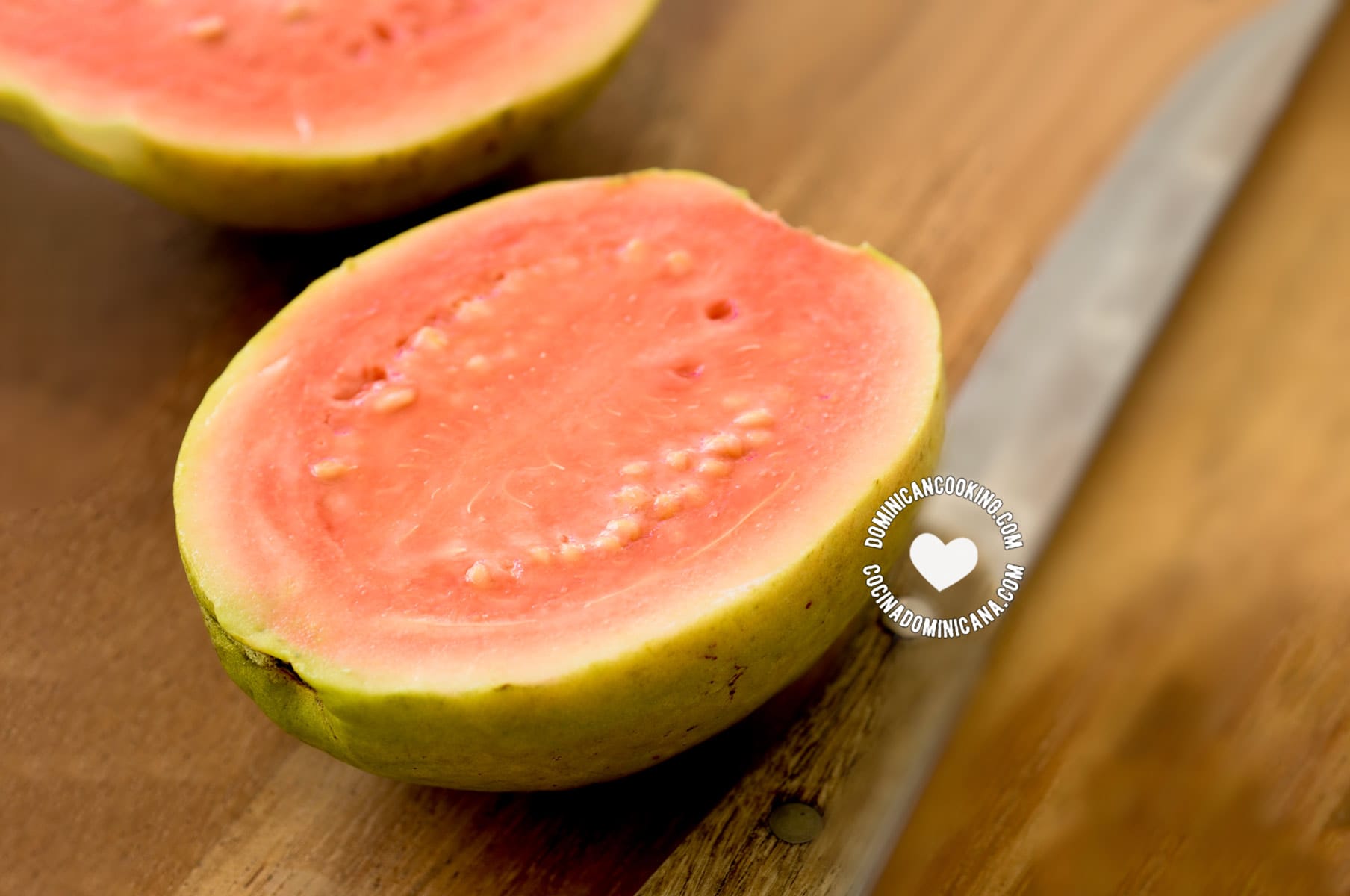
Psidium guajava is called guava in English. The fragrant, sweet guava can be eaten raw or cooked. In the Dominican Republic, dulce de guayaba (guava jam) is a favorite filling for cakes and pastries, and the fruit is used in candies, sweets, and juices.
In addition, guava is considered to have medicinal properties and is rich in vitamin C.
Guineo
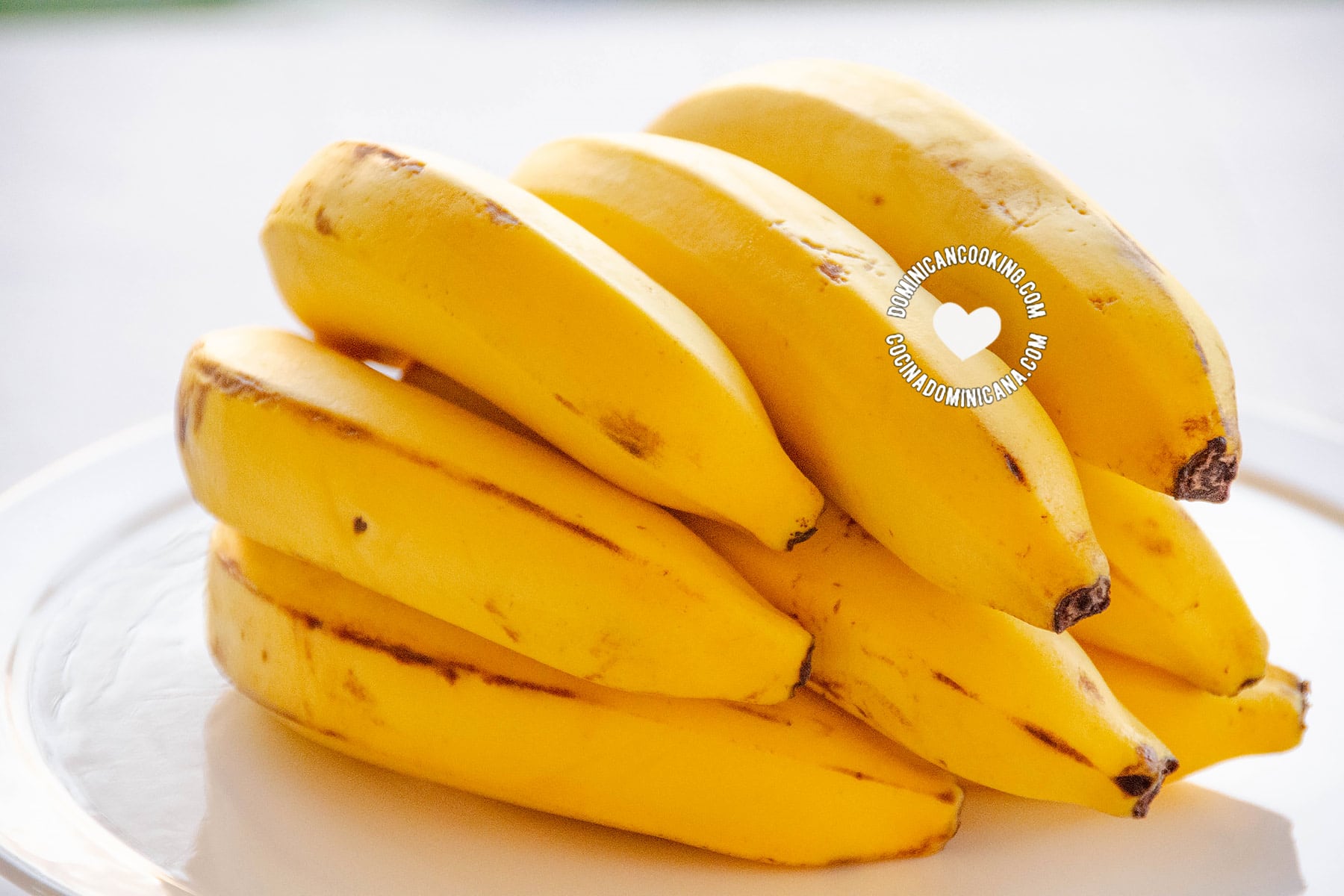
Musa cavendish is the fruit companion to our beloved plátano (plantain). Guineo, as Dominicans call bananas, is one of our main agricultural crops and popular fruit. It can be found on any corner fruit stand. Aside from eating it ripe like everywhere else, green banana is the main ingredient in a popular Dominican side dish.
The Dominican Republic is one of the world's biggest exporters of organic bananas, with Europe being our biggest export market.
Jagua
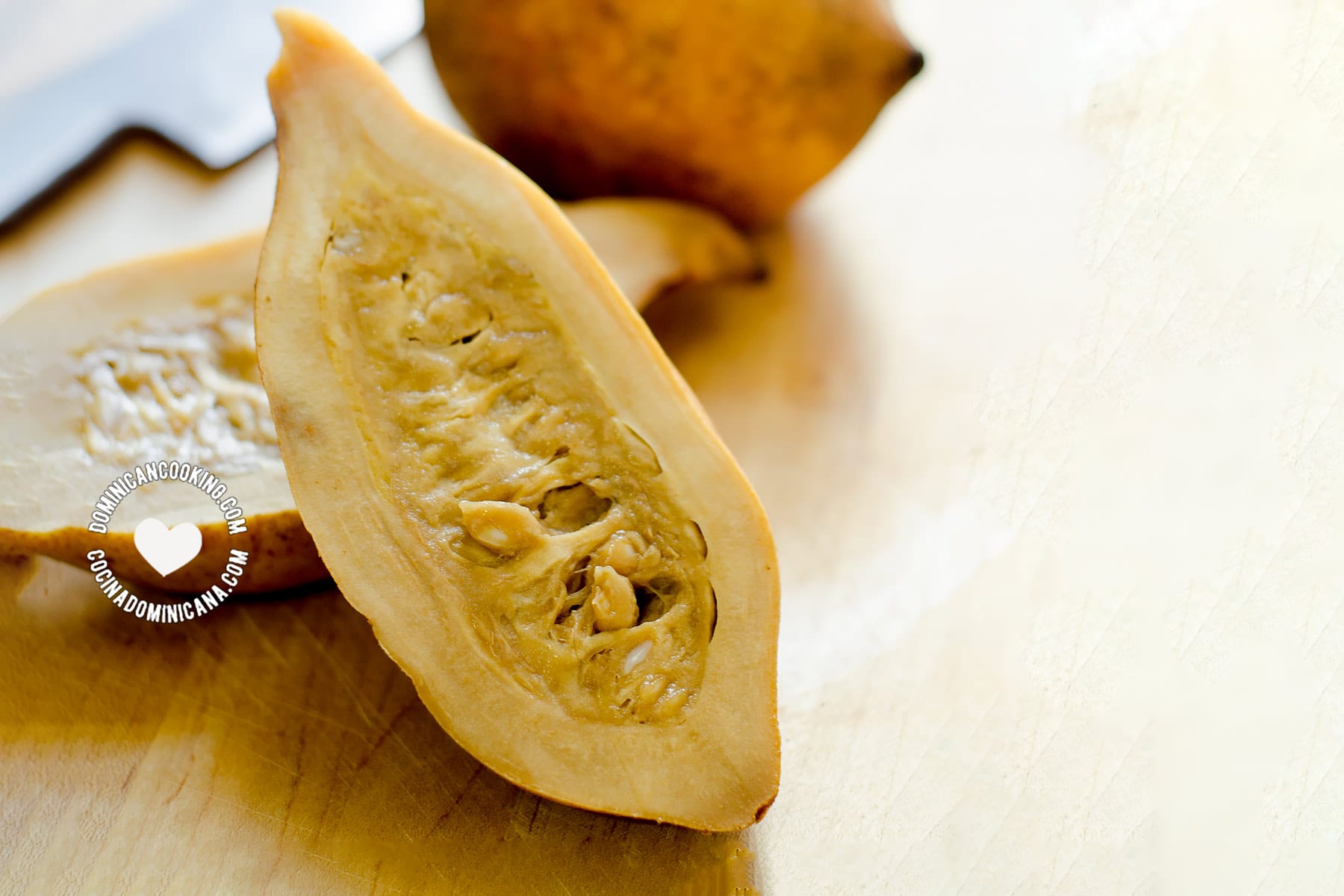
Genipa americana (jagua) is also known as genipa, marmalade box, genipapo, and huito. This fruit is used for making ice cream and jam, and in the Dominican Republic, guarapo de jagua, a fermented drink. It is said to have medicinal and nutritional qualities.
Jagua has meaty flesh, and the taste of jagua is one of those that is pretty hard to describe as it has a different taste from any other fruit.
Jobo
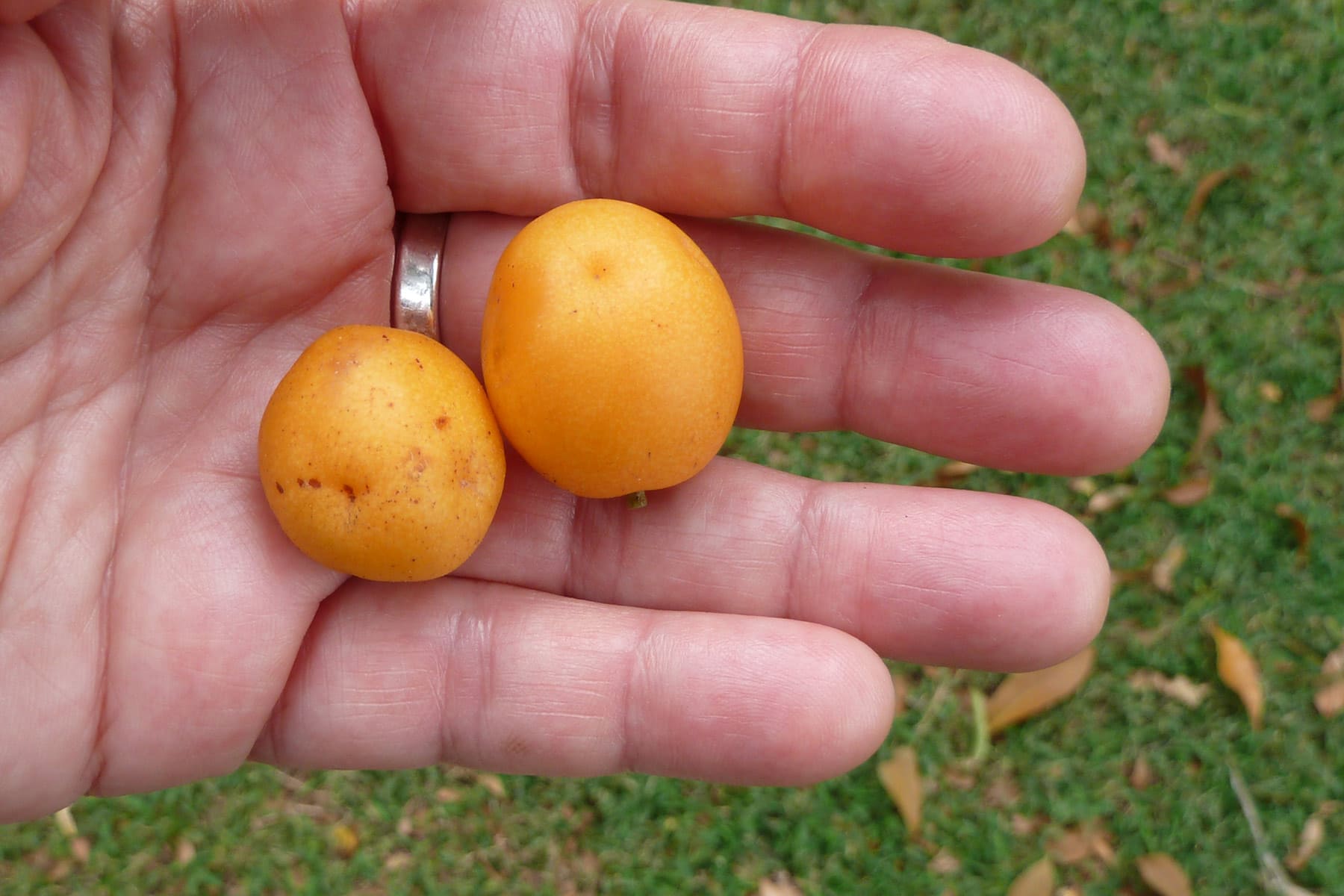
Spondias mombin is also known as yellow mombin or hog plum, Spanish plum, or gully plum in English. Other names in Spanish include jocote jobo, jocote, jocote de corroncha or de pava, ubos, mango ciruelo, jobo, ciruela, cedrillo, ciruela joba, jobito, ciruelo, and cirolero agrio or amarillo.
The fruits have a sharp, acidic taste. The pulp is either eaten fresh or made into juice.
Lechosa
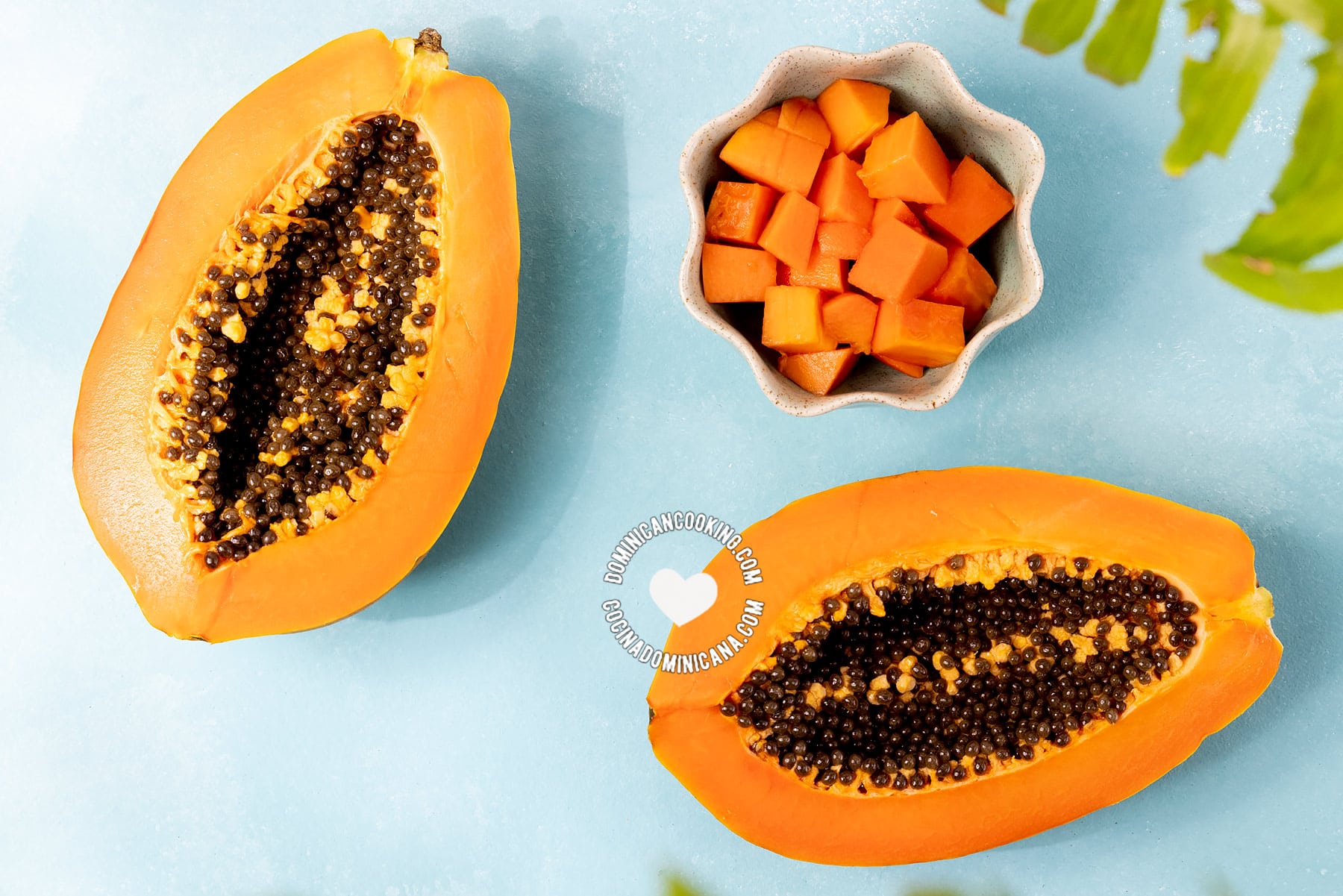
Carica papaya is the scientific name for a plant domesticated in Southern Mexico and Central America. Lechosa is one of the Spanish words for papaya, and how Dominicans call this fruit. Venezuelans also call it "lechosa", and Cubans call it "fruta bomba", and most other Spanish countries call it papaya. In English, it is also known as paw paw or pawpaw.
The plant - which is technically a herb - is very hardy, and the fruit is one of the main items on the fruit vendor's cart. Aside from eating it as fresh fruit, we enjoy it in our very popular batida de lechosa, and in dulce de lechosa, a simple dessert.
Limoncillo or quenepa
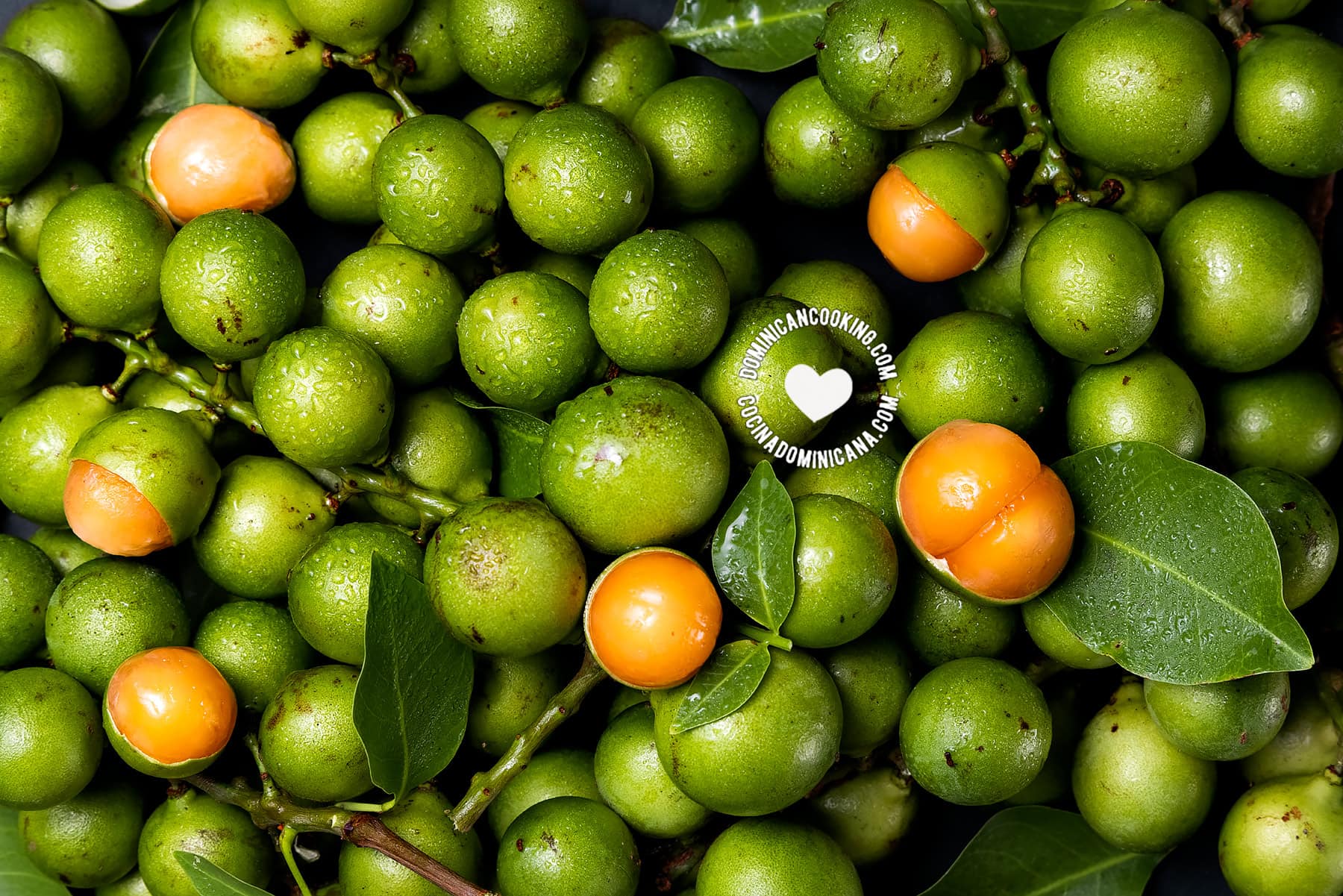
Melicoccus bijugatus: Commonly called Spanish lime, genip, guinep, genipe, ginepa, quenepa, quenepe, chenet, canepa, mamon, mamoncillo, limoncillo, skinip, kinnip, huaya, and ackee. This green fruit that looks like a lime is sweet and slightly sour, rich in iron and phosphorus.
Benefits of limoncillo: In some countries, it is used as an antiparasitic, and the tree’s leaves are said to have medicinal properties.
Mandarina
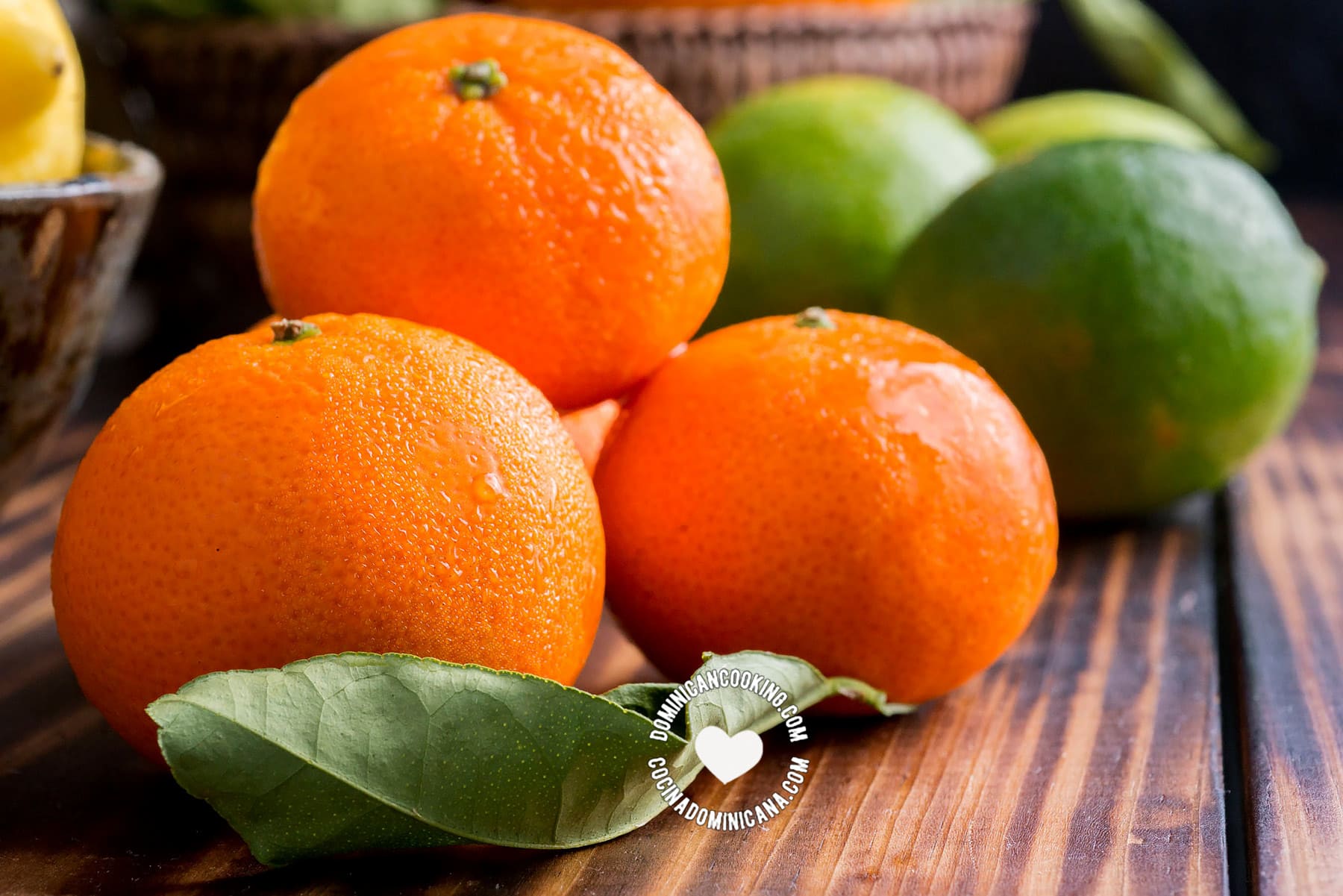
Mandarinas (Citrus reticulata), mandarines, or mandarin oranges, are a Christmas staple in the Dominican Republic, alongside apples, pears, and grapes. While mandarinas are grown locally [source], some of it is imported at the end of the year, as local production does not meet the growing demand. We love it as a snack, and it can also be made into our lovely Christmas Licor de mandarina liqueur.
Mango
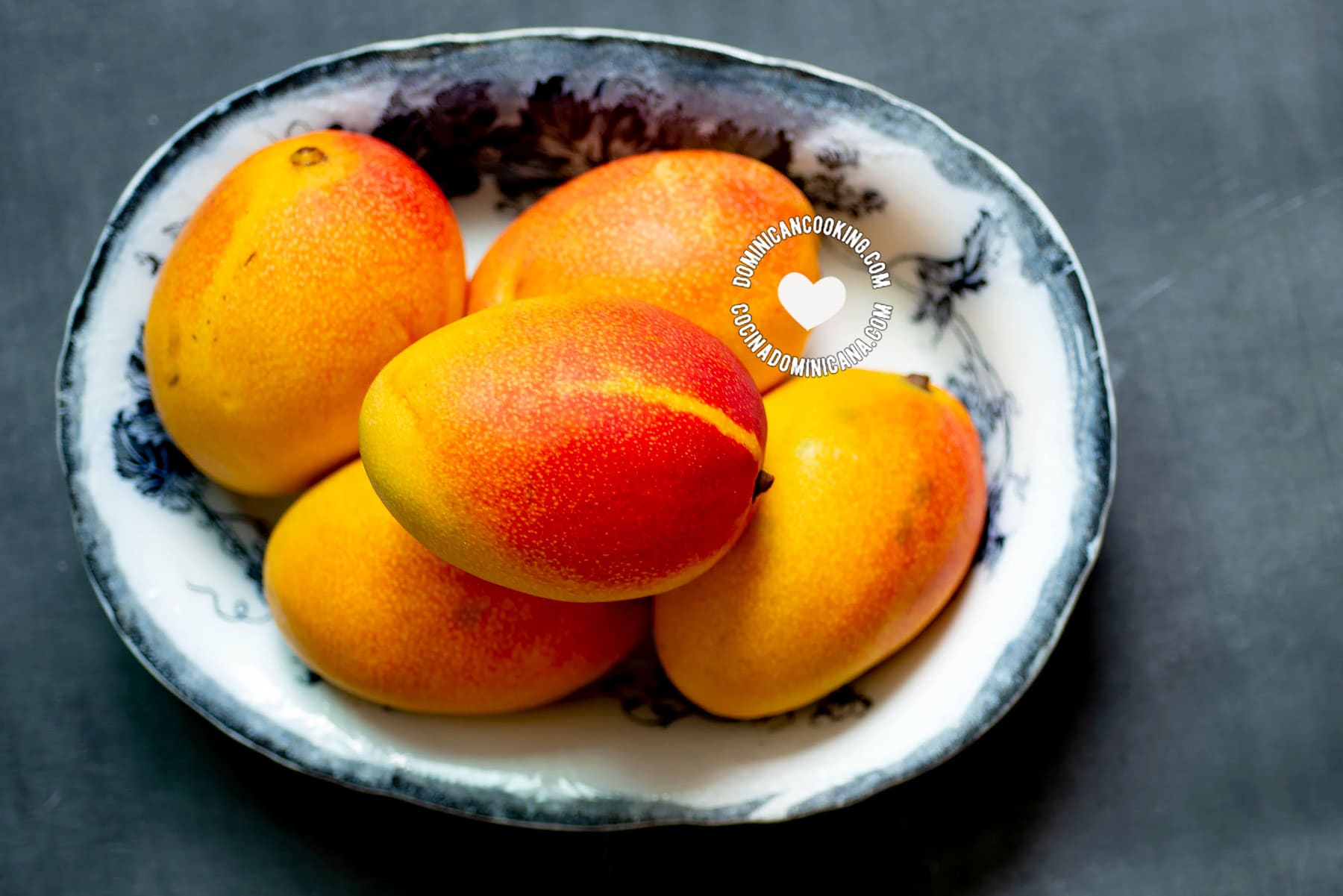
Mango (Mangifera indica) is a tropical stone fruit that originates in a part of Asia that extends from southeast Asia to India. It has an oval shape, a large center pit, and juicy, fragrant, very sweet flesh. Mango season in the Dominican Republic extends from March to August, depending on the different varieties.
We eat mangos just as a fruit snack or may add them to the blender when making smoothies or frozen treats.
Manzana de agua
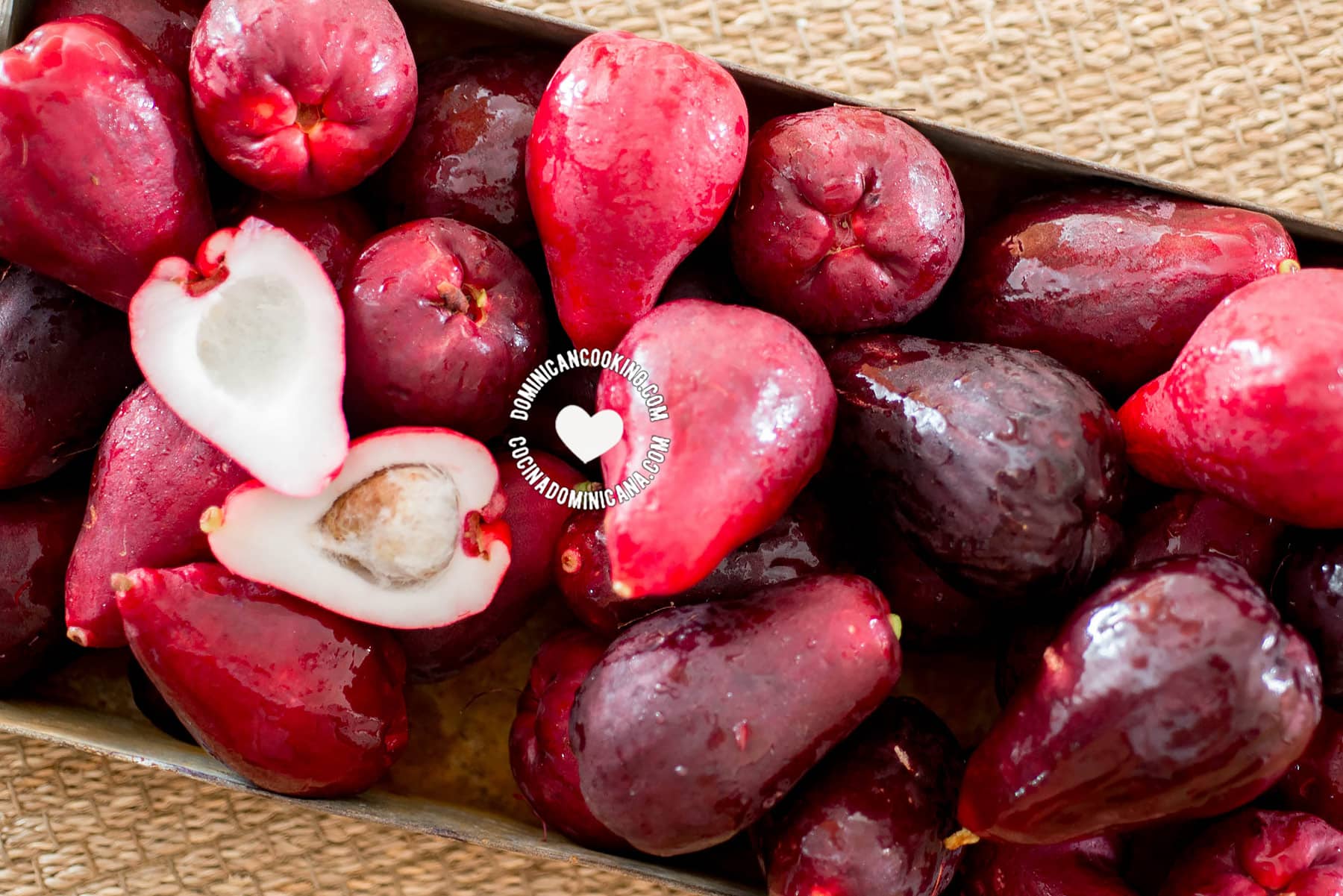
Syzygium malaccense (Malay apple, pomarosa, cahuilito de surinam, manzana de solimán). It's not uncommon in the Dominican Republic, and it's used to make preserves.
This fruit is pink on the outside and white on the inside. It is not very sweet, but crisp and refreshing, with a floral flavor.
Manzana de oro
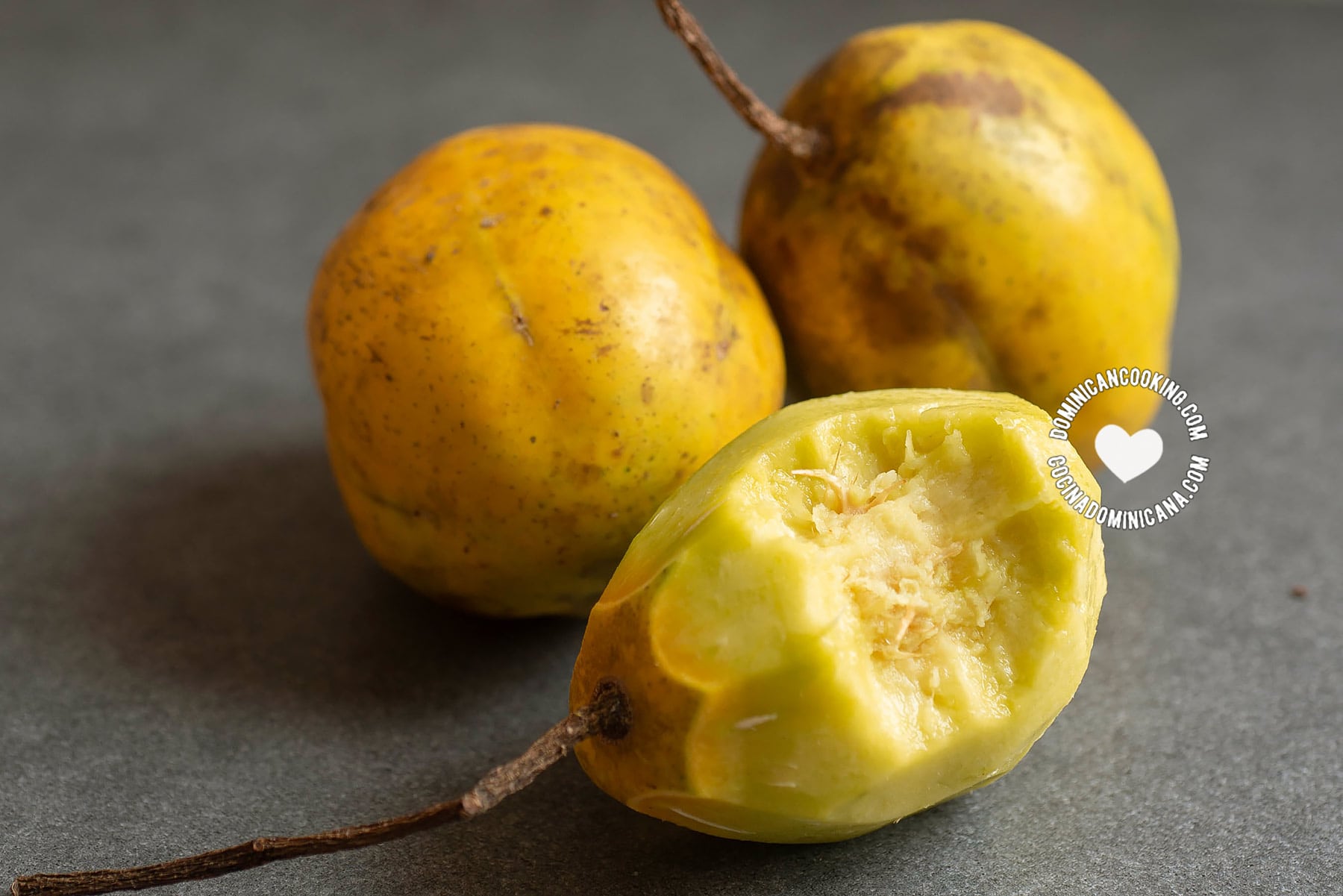
Spondias dulcis is commonly known as ambarella, pomme cythere, June plum, golden apple, and golden plum. It's a yellow fruit with thick skin, amber-color flesh, and a large stone with stiff threads sticking out.
This fruit has a light sweet taste with a hint of sour and is either consumed raw or, in some countries, made into preserves.
Naranja agria
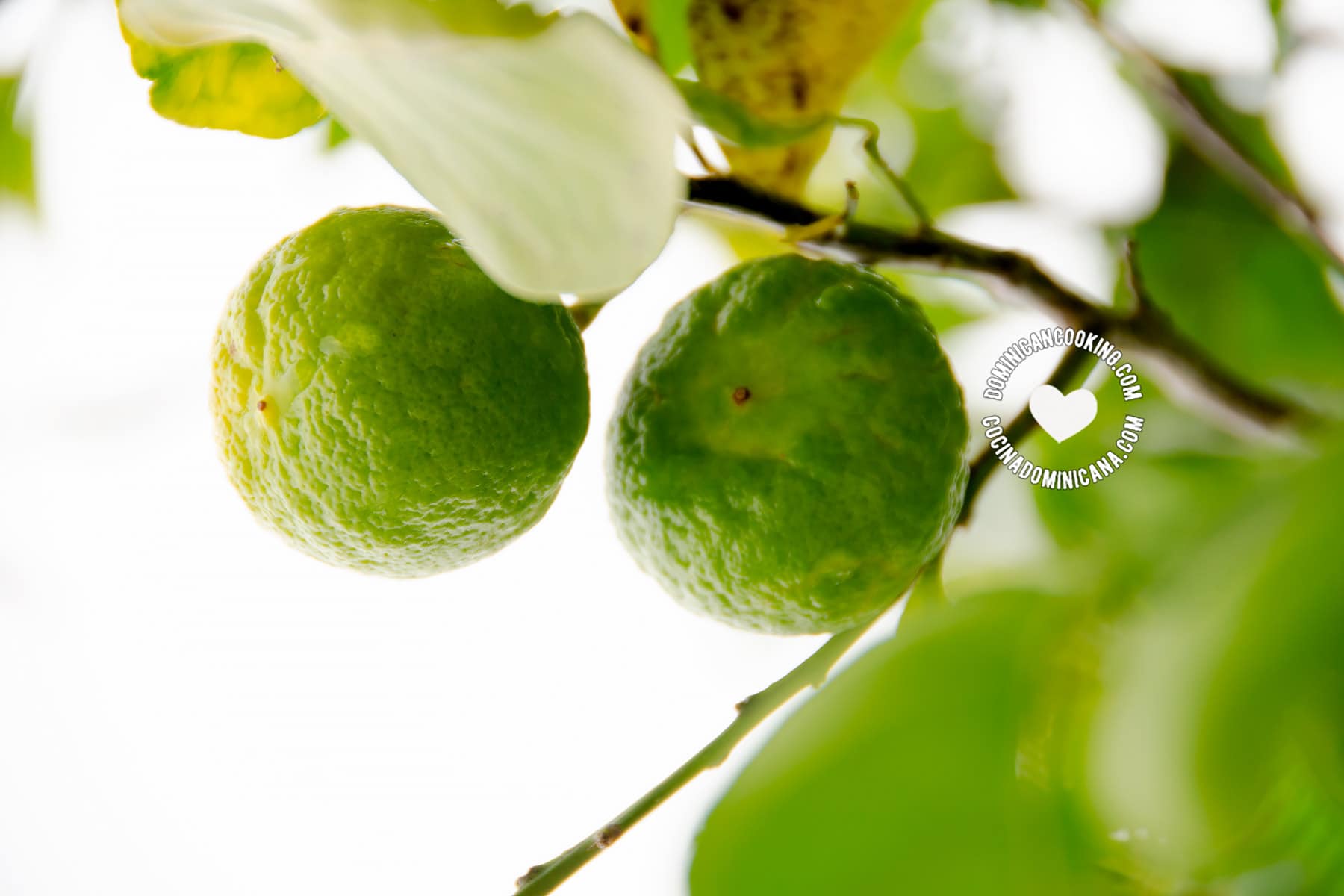
Citrus aurantium: Bitter orange, AKA Seville orange, sour orange, and marmalade orange. It is very sour, with a hint of bitterness, and has a much rougher peel than most citrus fruits. In Dominican cooking, it is used in marinades, for seasoning meats, for making Dulce de naranja (Bitter Orange Candy), and as the base of our favorite spicy sauce: Agrio de naranja.
Typically, we substituted it for lime juice (or lemon juice) if none is available.
Níspero
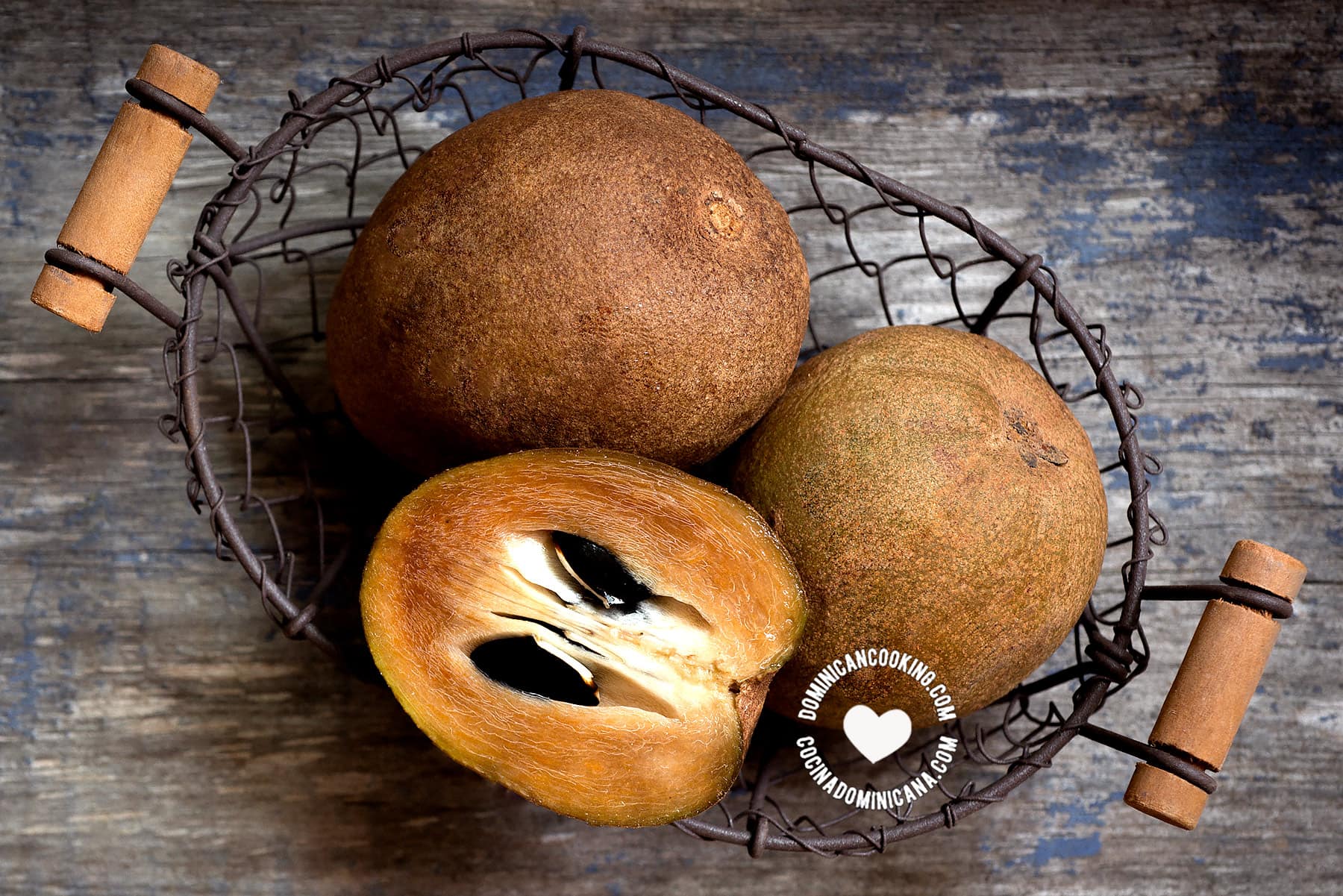
Manilkara zapota: níspero (In English chicle, naseberry, mispel, sapodilla, and sapote) is native to southern Mexico, Central America, and the Caribbean. It is known in other Spanish-speaking countries as chico sapote, níspero, zapote and zapotillo. Níspero is cultivated locally in the Dominican Republic.
Nísperos have a thick brown skin, mushy brownish flesh, and several black pits inside. They are very sweet, even by tropical fruit standards, and are rich in carbohydrates, and also are a fairly decent source of vitamin C. While it can be consumed as a fruit, it is much more popular as the main ingredient in batida de níspero.
Noni
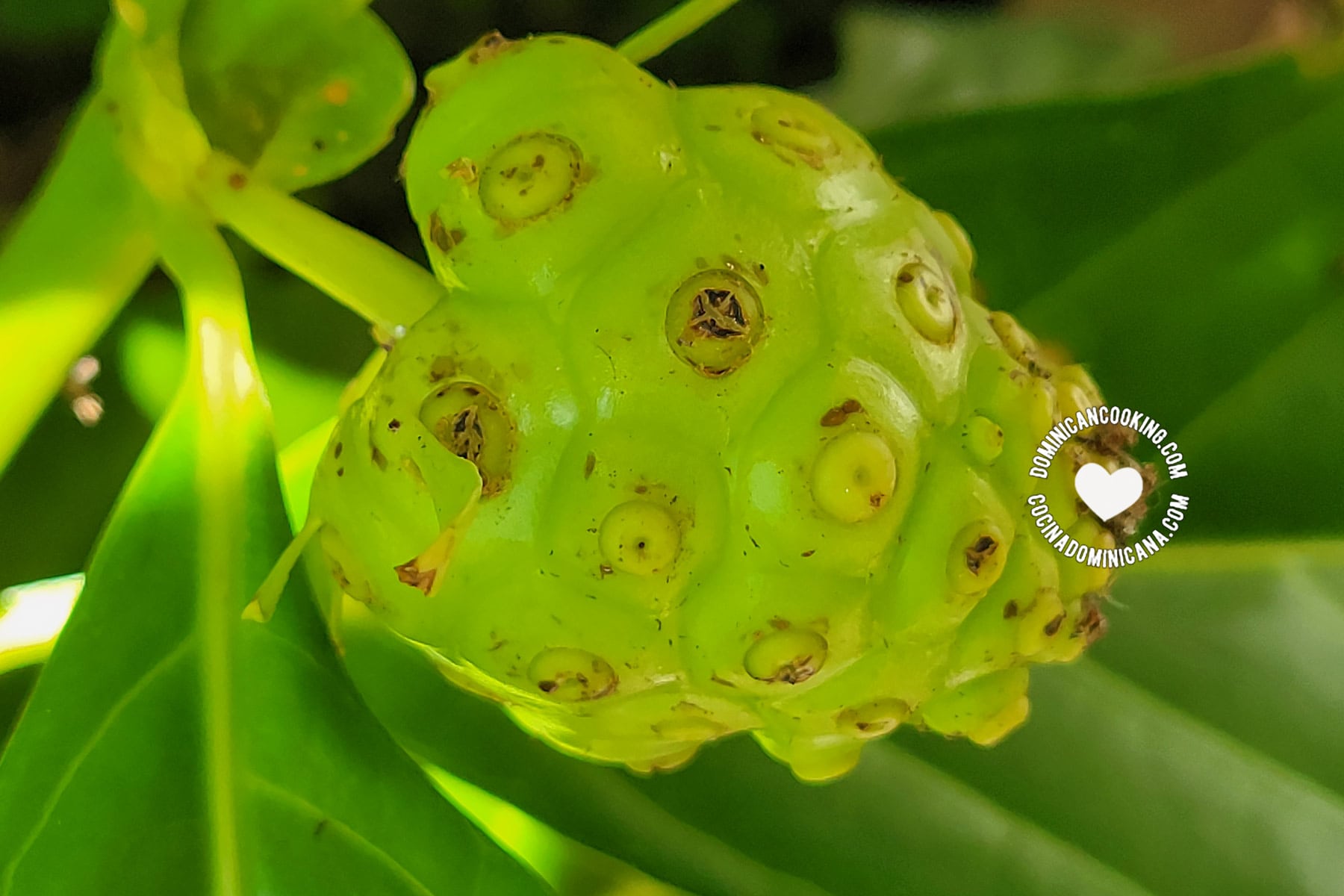
Morinda citrifolia is a fruit-bearing tree in the coffee family, native of Southeast Asia and Australasia. Noni is a relative newcomer to the Dominican fruit scene, and some people make it into juices. It has been embraced for its purported medicinal properties, though some people should not consume [source] it and there's scant scientific evidence of these properties. Noni is very rich in potassium and has been a food source for millennia in Polynesia.
I only added it to the list because a noni bush (that will grow to a tree) sprung up in my garden, possibly brought by birds.
Piña
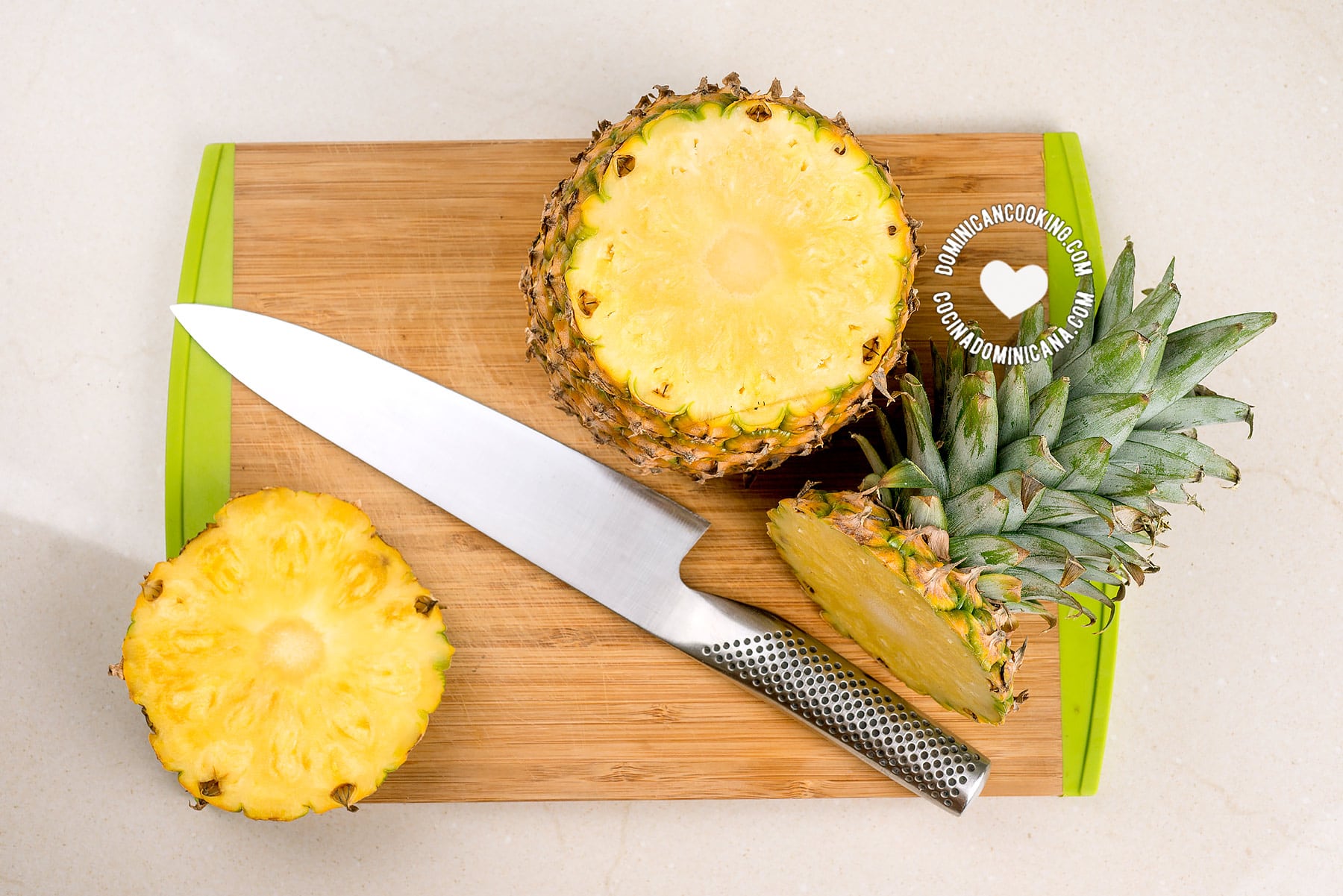
Ananas comosus is the scientific name for piña, as pineapple is called in Spanish. Pineapple, also known as ananas, is a plant native to South America. Pineapple is grown in the Dominican Republic and is a staple at fruit stands.
It is eaten sliced as a snack and can be made into drinks and desserts, as in pineapple juice, fermented juices, made into desserts, and in jams.
Pitahaya
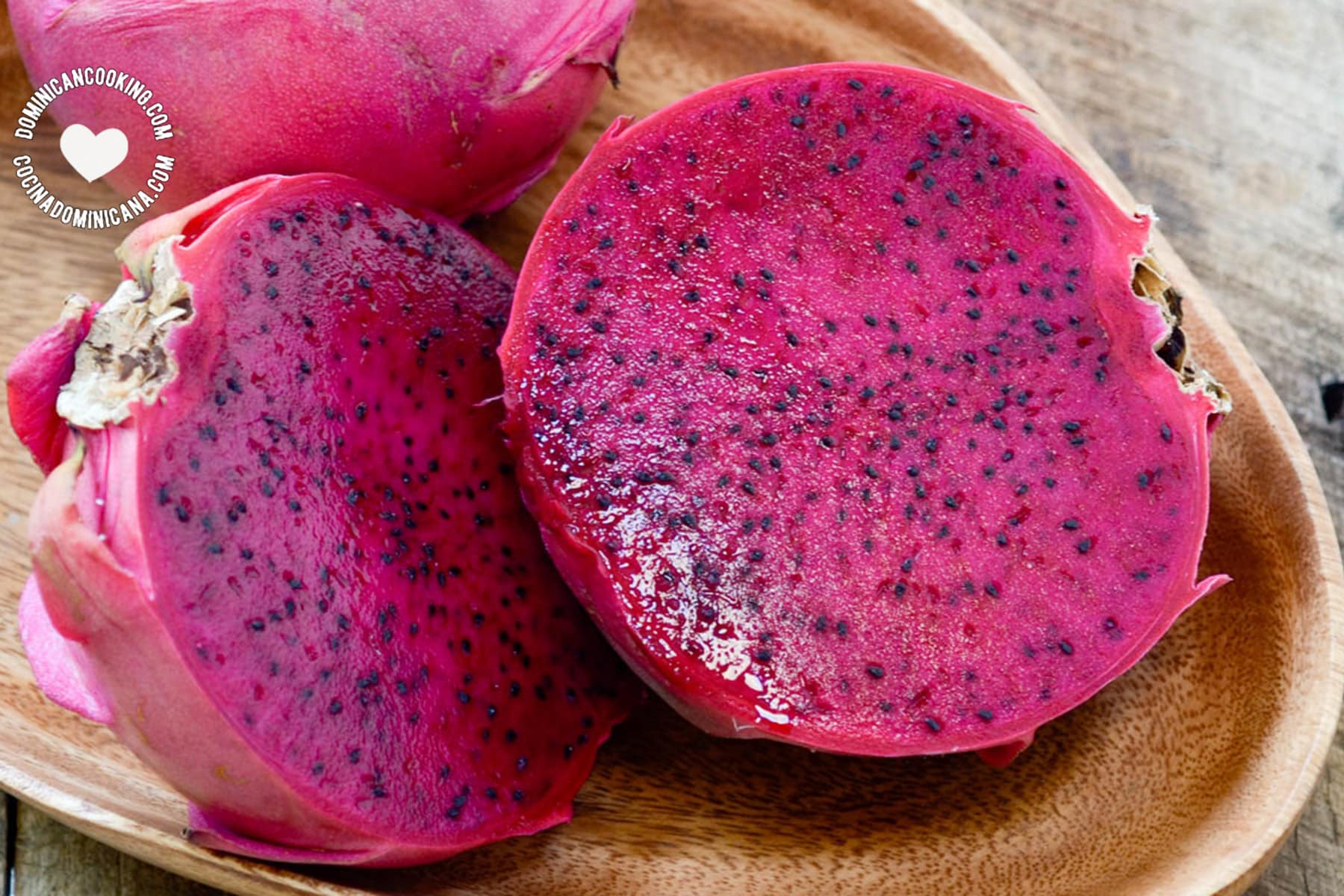
Hylocereus costaricensis (dragon fruit) belongs to the cactus family and its name means ‘scaled fruit’. It is also sometimes spelled pitaya. Although the plant is cultivated in the Dominican Republic (where it also grows in the wild), the fruit is not that well known.
It is eaten sliced as a snack and can be made into desserts.
Tamarindo
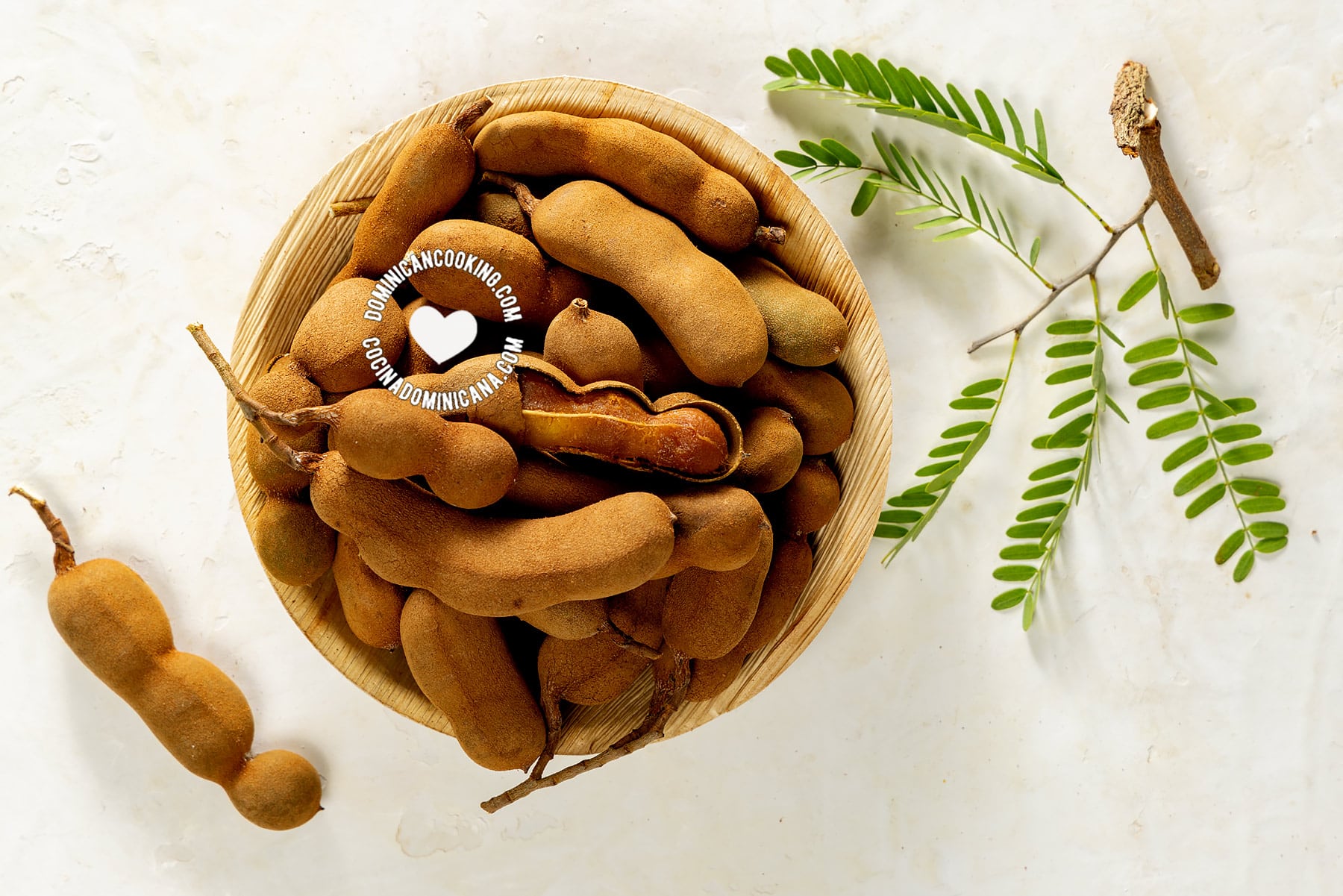
Tamarindus indica: Tamarind is a brown, pod-like fruit with a sweet, tangy pulp, used in cuisines around the world. In the Dominican Republic, it is most commonly consumed as tamarind juice or tamarind candy. It is said to have soporific properties.
Uva de playa
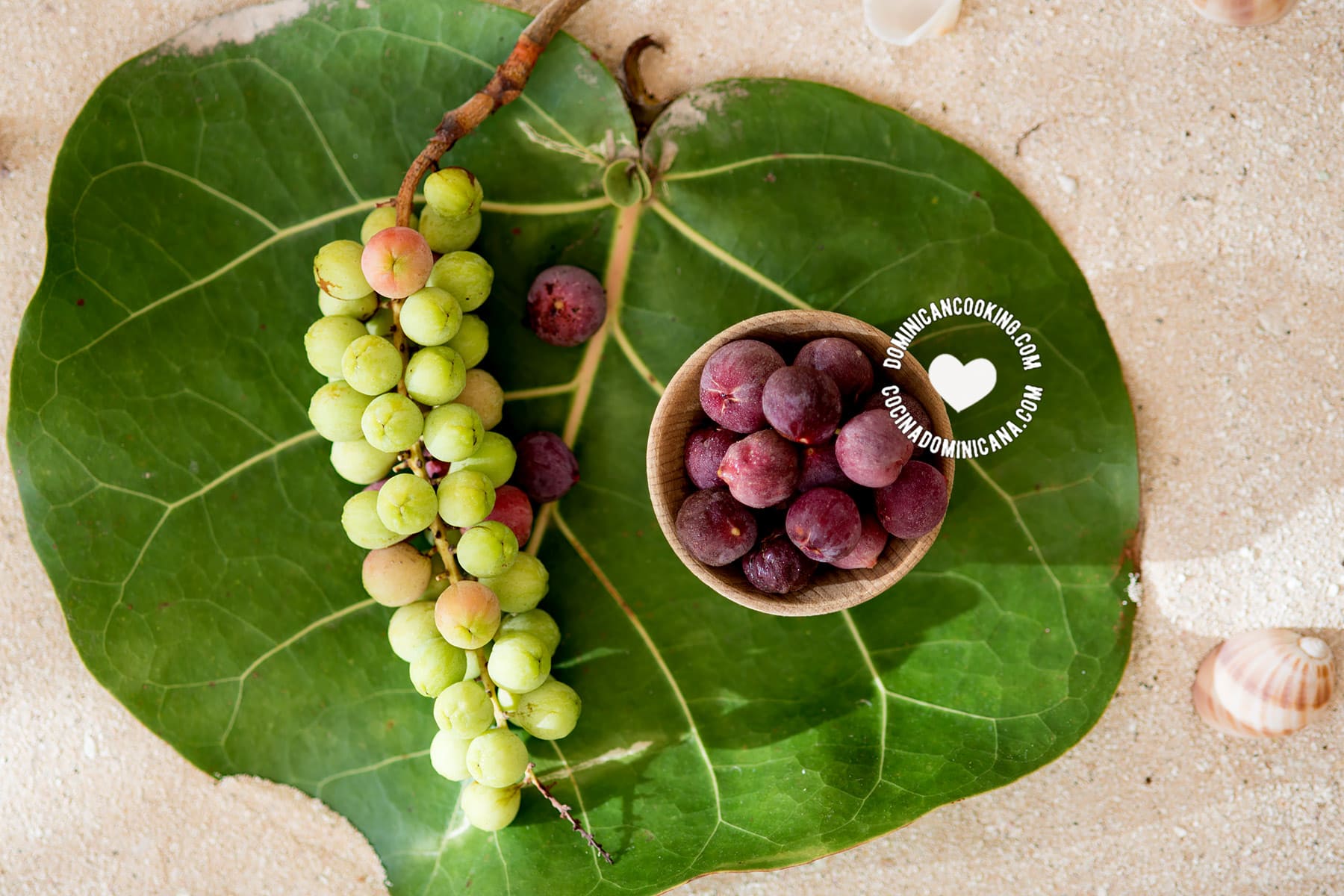
Coccoloba uvifera (known in English as cocoloba, seagrape sea grapes, or baygrape) is a very common tree in the Caribbean and grows well in coastal areas as it is highly tolerant of salt. The fruits, which look like grapes, turn a deep purple as they ripen. In some Caribbean islands, they are used in preserves and even wines.
Vinagrillo
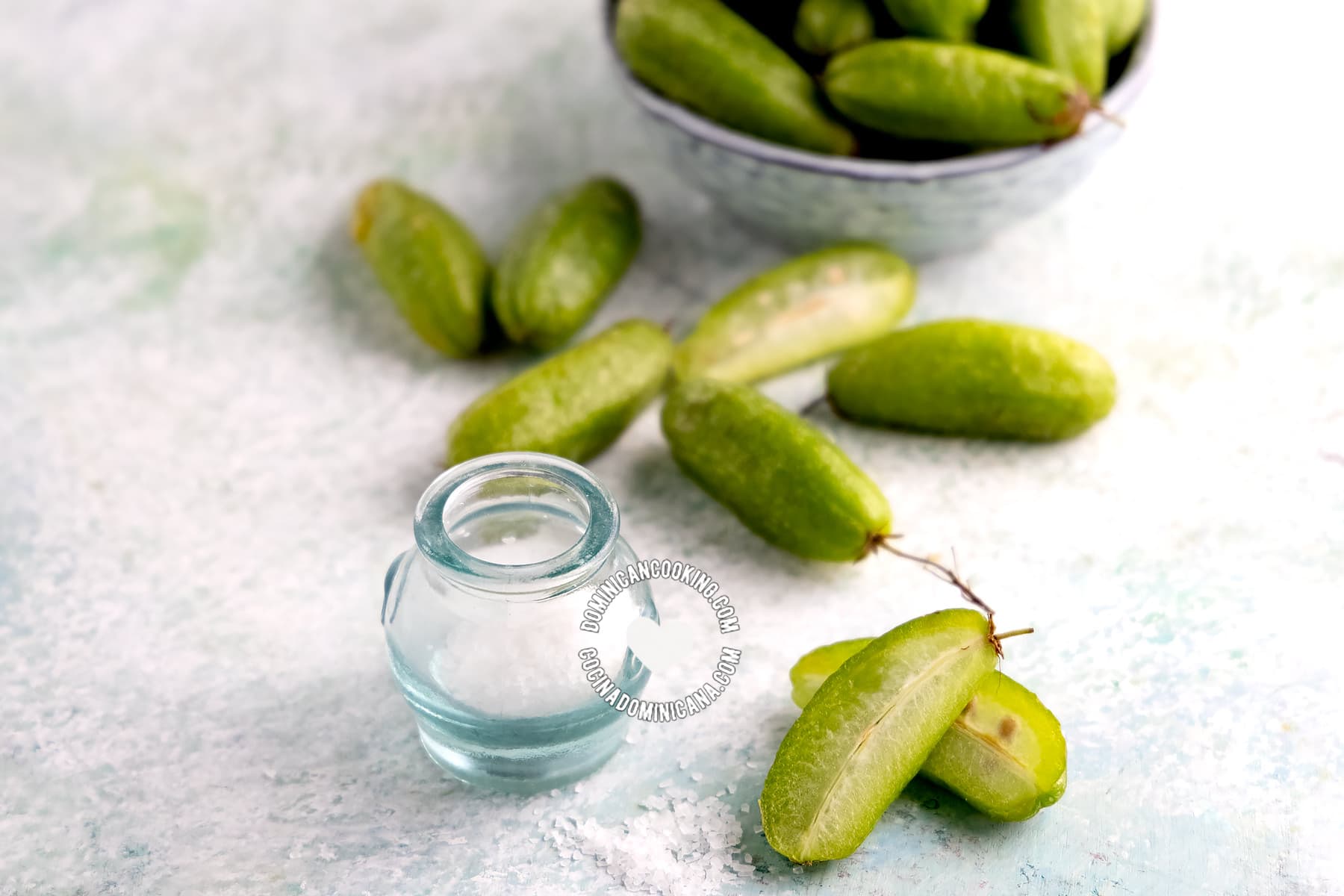
Averrhoa bilimbi is the scientific name for what Dominicans call Vinagrillo, a fruit-bearing tree related to starfruit. The fruit, similar to a small cucumber, has a strong sour, vinegary taste (hence the name "vinagrillo", which means "little vinegar").
Vinagrillo is very popular with children who eat them sprinkle with salt, but can also be made into dulce en almíbar, a dessert of fruit cooked in spiced syrup. Another use is to make a homemade vinagrillo vinegar.
Zapote
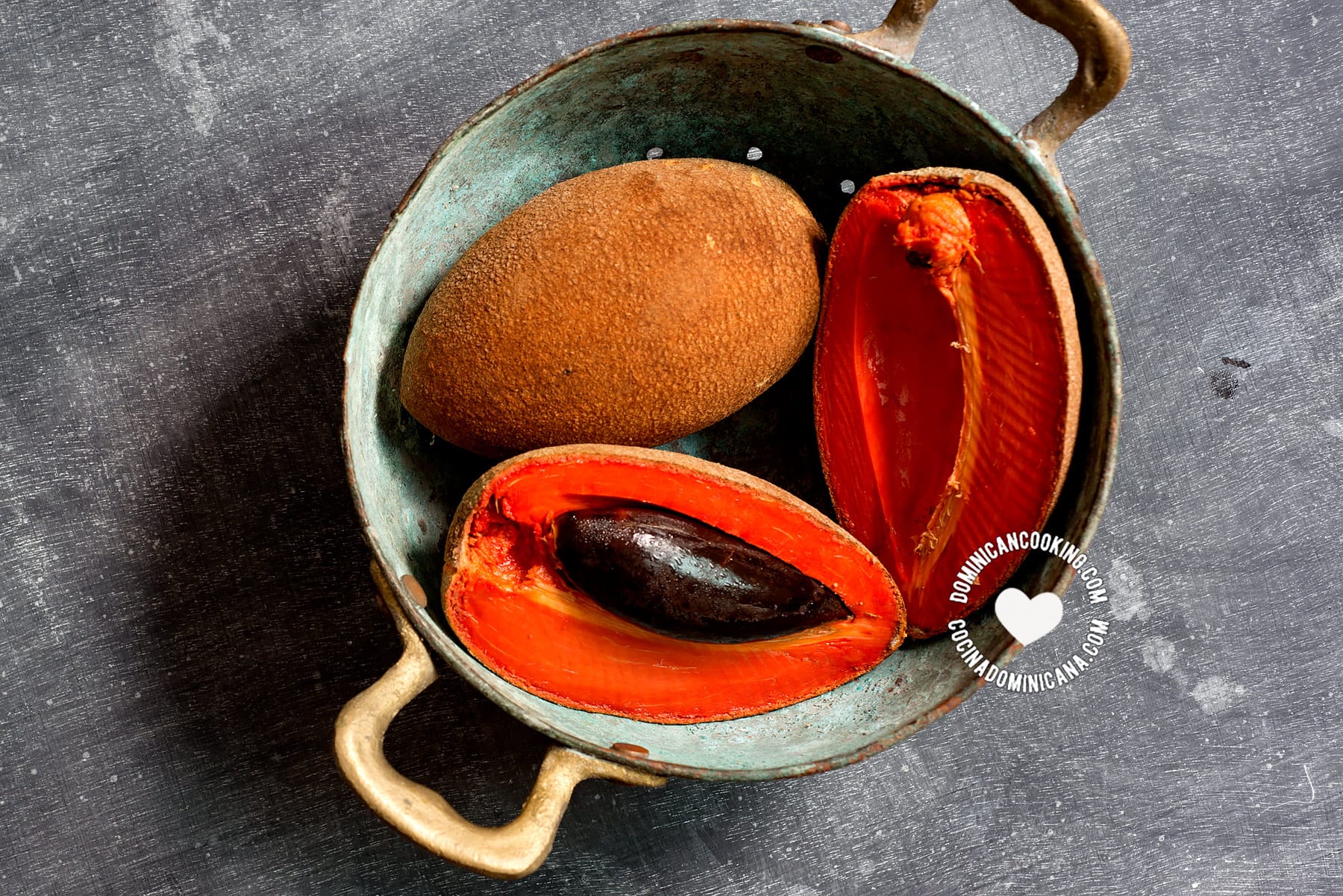
Pouteria sapota (English name: sapote) is known as mamey, zapote colorado, níspero and zapote rojo in different Latin American countries. In the DR, it's a favorite choice for batidas (smoothies or milkshakes).
Fruit seasons
Some fruits, like mangos, arrayán, and others are seasonal; others are ripe for the picking all year round (life in the tropics!). Since we don't have proper seasons, there's always locally-grown fresh fruit to enjoy for very little or even free.
Popular fruits
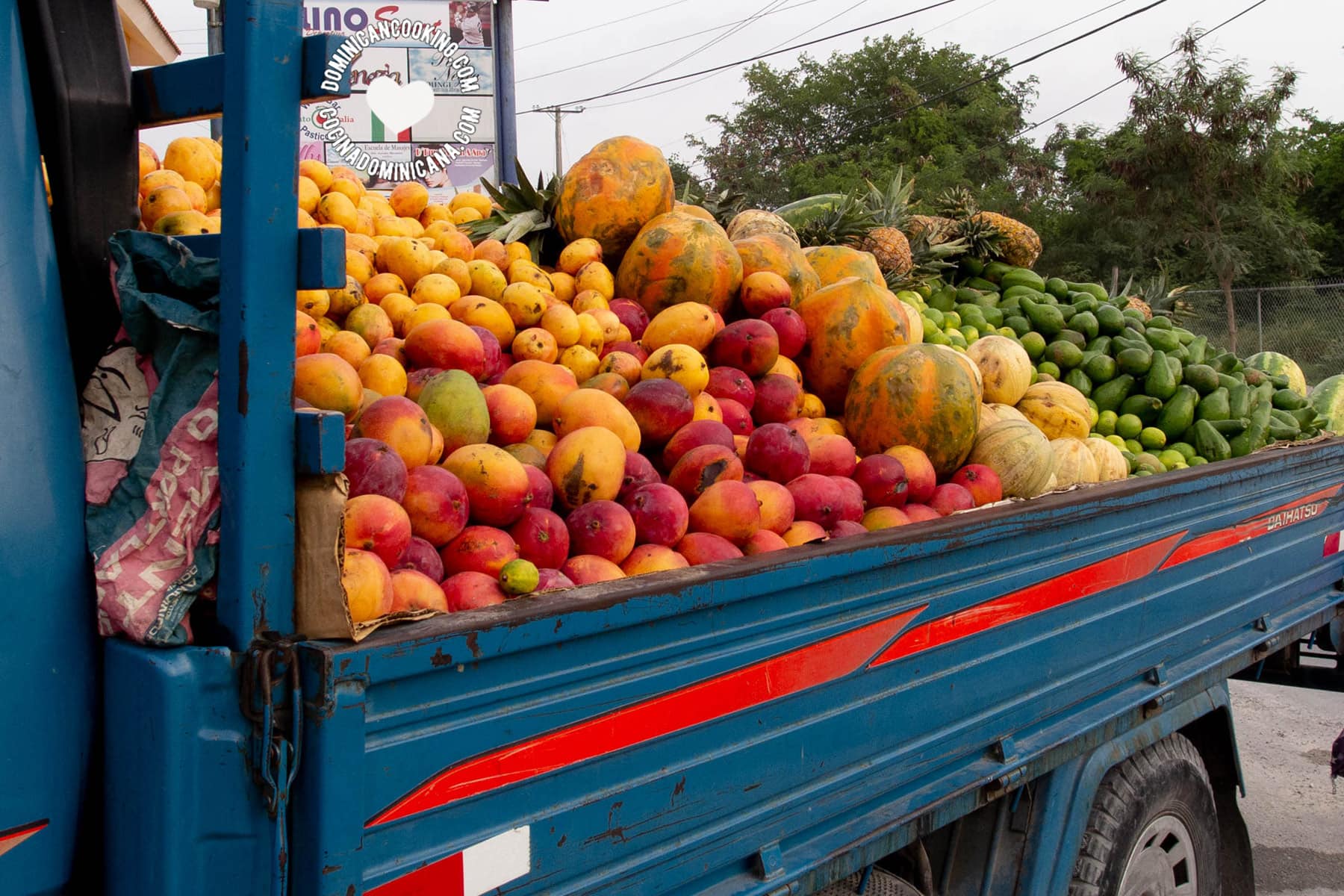
Aside from mango, other tropical fruits like papaya (lechosa), caña (sugarcane), banana (guineo), pineapple (piña), guava (guayaba), and passionfruit (chinola) are the most popular and can be found all over the country sold by the ubiquitous corner fruteros.
Though not a fruit in the culinary sense, Avocado is sold practically everywhere, and aguacateros pushing their wheelbarrows or balancing their baskets on their heads shout out their fare in little towns and upscale city neighborhoods.
Here we focused on traditional fruits enjoyed in the Dominican Republic, from Aguacate to Zapote. Did we miss anything?
Images ©DominicanCooking.com except jobo (Wendy Cutler)).
Published May 8, 2022, and last revised


